One of the biggest debates in kitchen and home design is this: should granite be replaced by marble, or quartz? While more developers are looking toward quartz as an alternative to marble, neither one clearly outweighs the other. But there are four different categories that compare the two materials, and can help both developers and homeowners decide which one best suits them. Their appearance, durability, maintenance and overall cost can play a part in choosing which one is better to replace granite.
For appearance, it is largely a matter of preference. According to MSI Surfaces, while Quartz is more uniform in its design and color, it can also mimic the look of natural stone as well. Meanwhile, with marble, each slab is one-of-a-kind. If you have marble as your kitchen countertop, no other counter will be the same as that one. The uniqueness adds a classic beauty to any room.
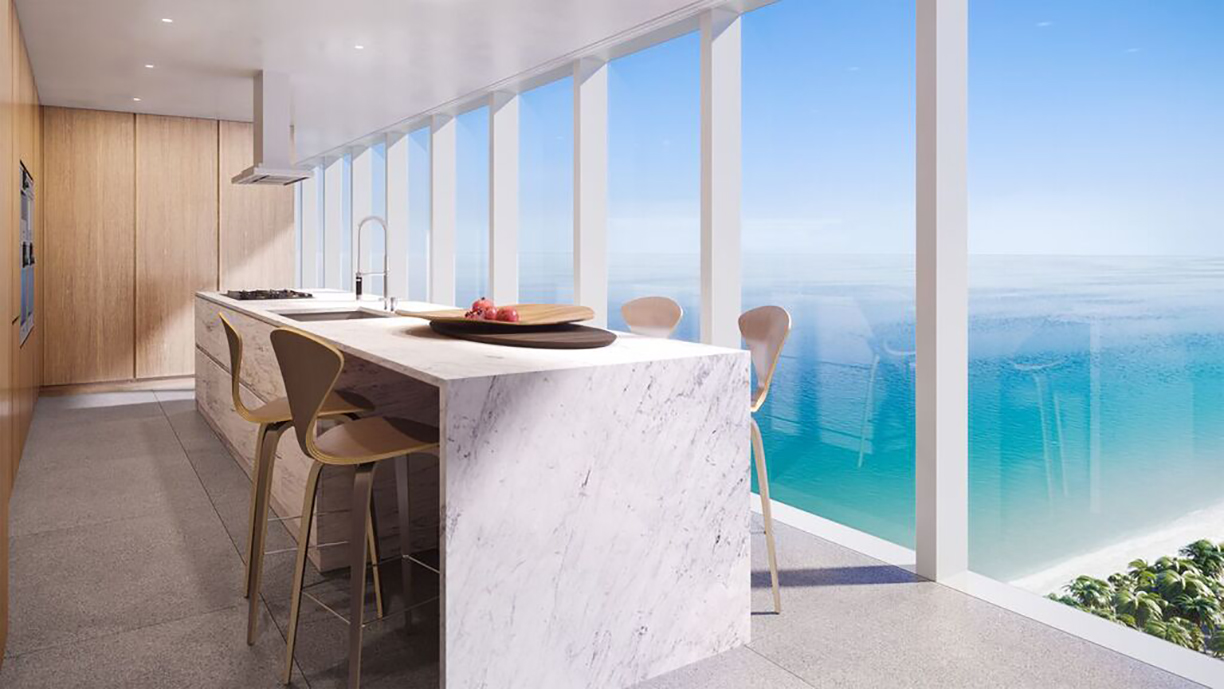
Renderings courtesy of KAR Properties (Marble)
Marble
Quartz
Appearance
- One-of-a-kind
- Natural stone rather than man-made
- Uniform in design and color
- Man-made, but mimics natural stone
Durability
- Can get stained or discolored more easily
- Overall, durable and dependable
- Direct sunlight or UV rays can cause irreparable discoloring
- Overall, durable and dependable
Maintenance
- Sitting water can cause discoloration or stains
- Overall, more maintenance is required
- Hot pots or pans sitting on it can scorch the stone
- Overall, less maintenance is required
Price
- More expensive per square foot
- $50-150 per square foot
- Less expensive per square foot
- $40-100 per square foot
In terms of durability, both are great options. Quartz is man-made, but is increasing in popularity because of the material’s durability. Marble is from many different countries around the world, and is also a durable but natural material as well. With quartz, however, any direct sunlight or high UV rays can cause irreparable discoloring, according to Polycor. Although both can gain chips on their edges and other minor damages, neither are fragile or impractical for everyday use. For durability, both quartz and marble are great options.
Marble requires more maintenance since it is natural stone. Sitting water on a marble countertop can cause discoloration and stains. For individuals with a busy lifestyle, quartz would be much easier to manage. But with quartz, make sure not to place any hot pots or pans on the counter — doing so could scorch the material. In terms of overall maintenance, however, quartz is generally a better fit.
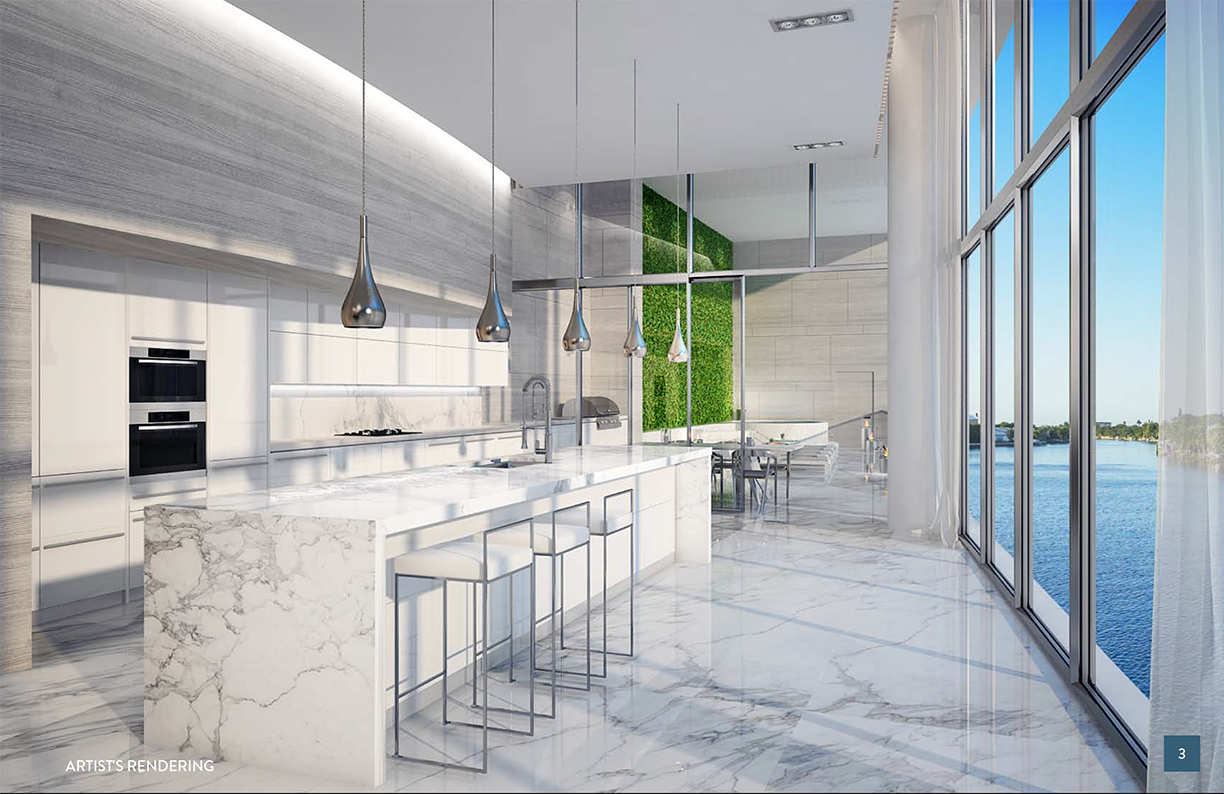
Rendering courtesy of RIVA Residences (Quartz)
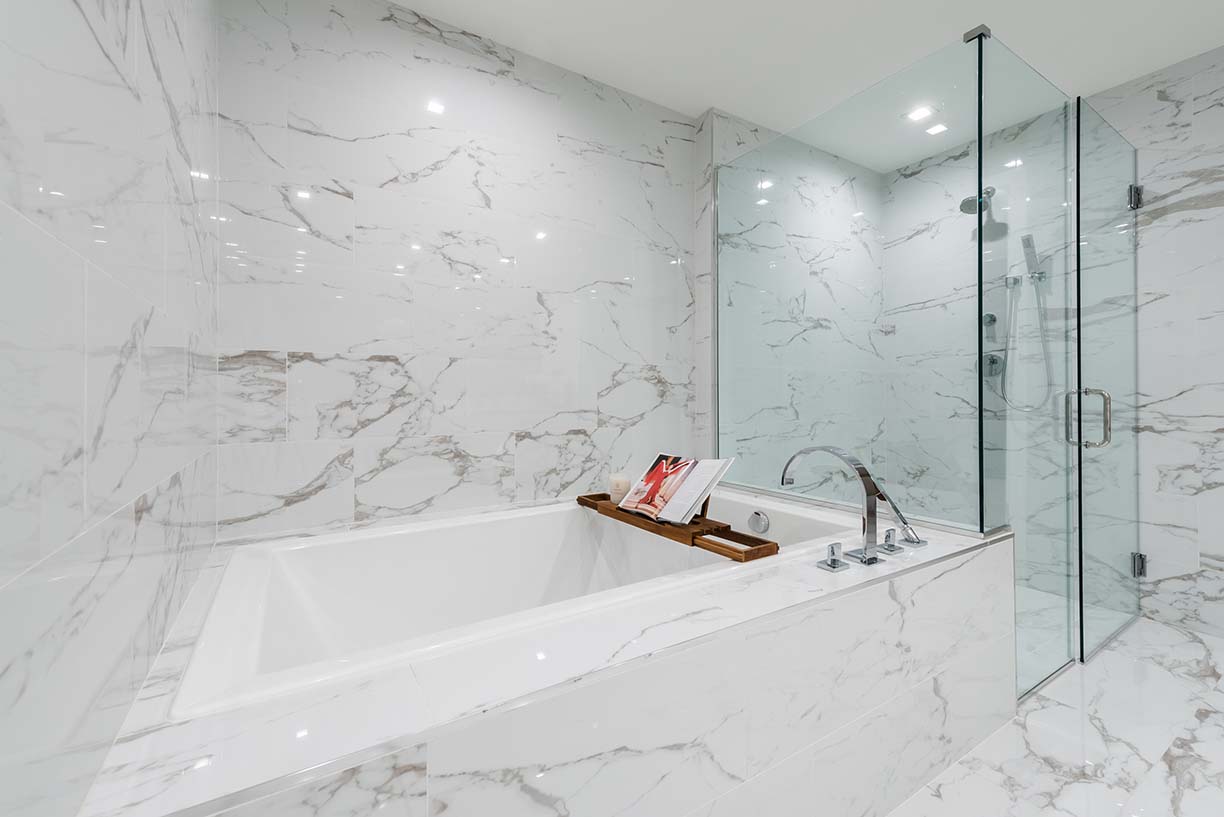
Rendering courtesy of Akoya Boca West (Quartz)
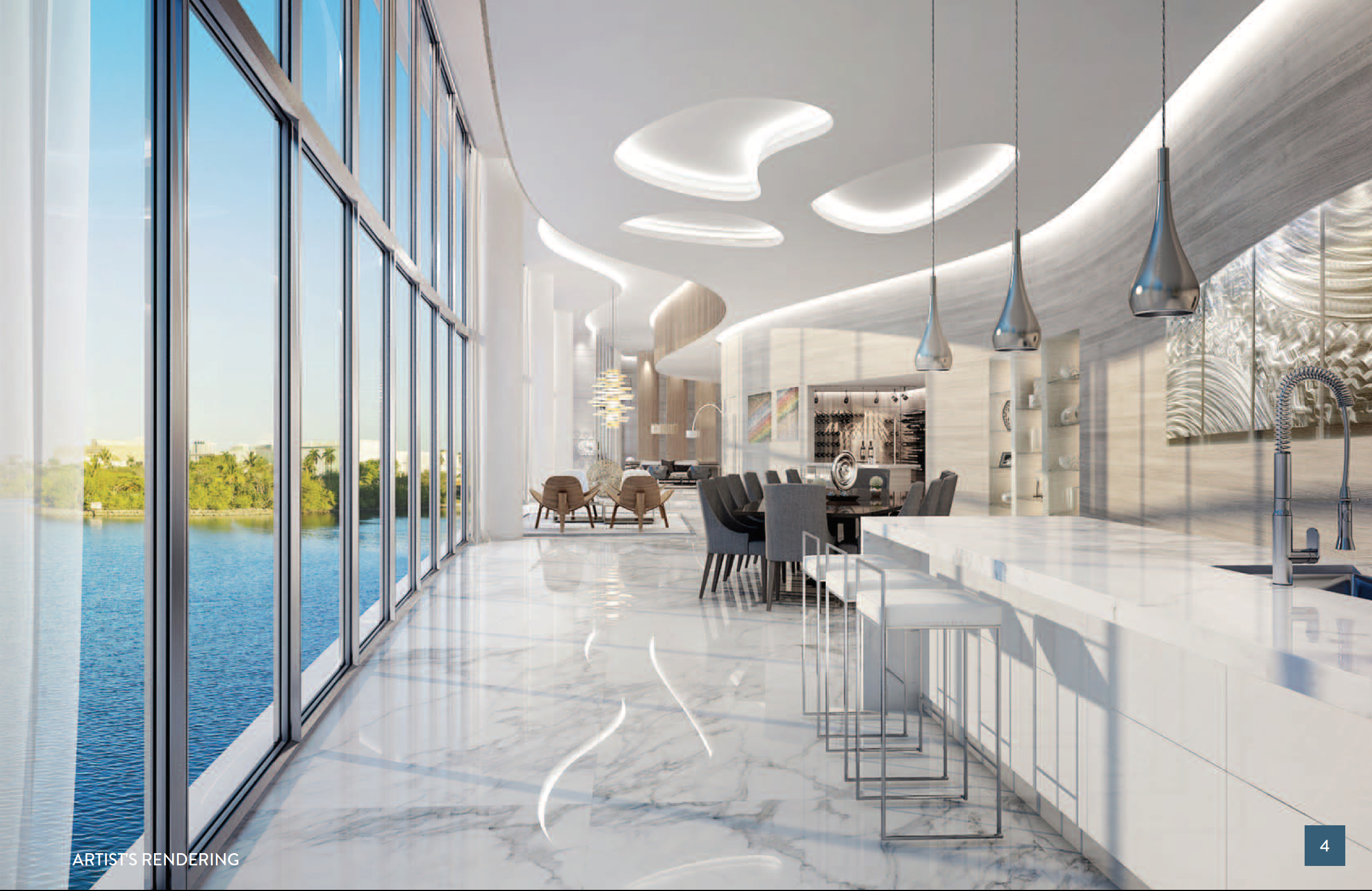
Rendering courtesy of RIVA Residences (Quartz)
Lastly, marble is usually more expensive than quartz. MSI Surfaces explains that while each square foot of marble is only slightly more expensive than quartz, that price tag can quickly add up when designing a whole room. Despite the overall added price, however, marble can add to a home’s value, so it might be worth it in the long run for some homeowners and designers.
While quartz is more practical in terms of durability and maintenance, nothing is like the one-of-a-kind material found with marble. In the end, knowing both materials’ advantages and setbacks can help determine which one works best.
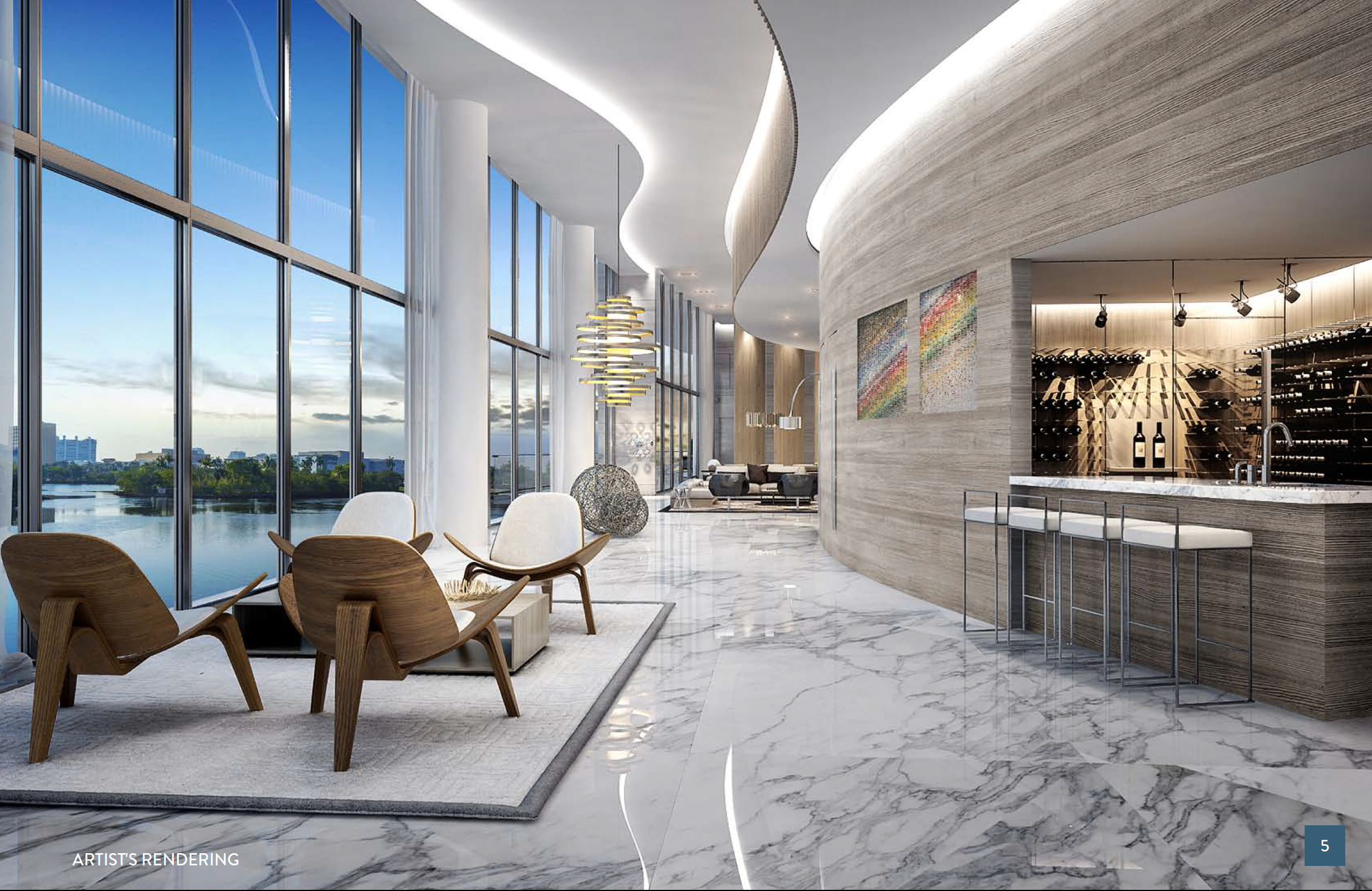
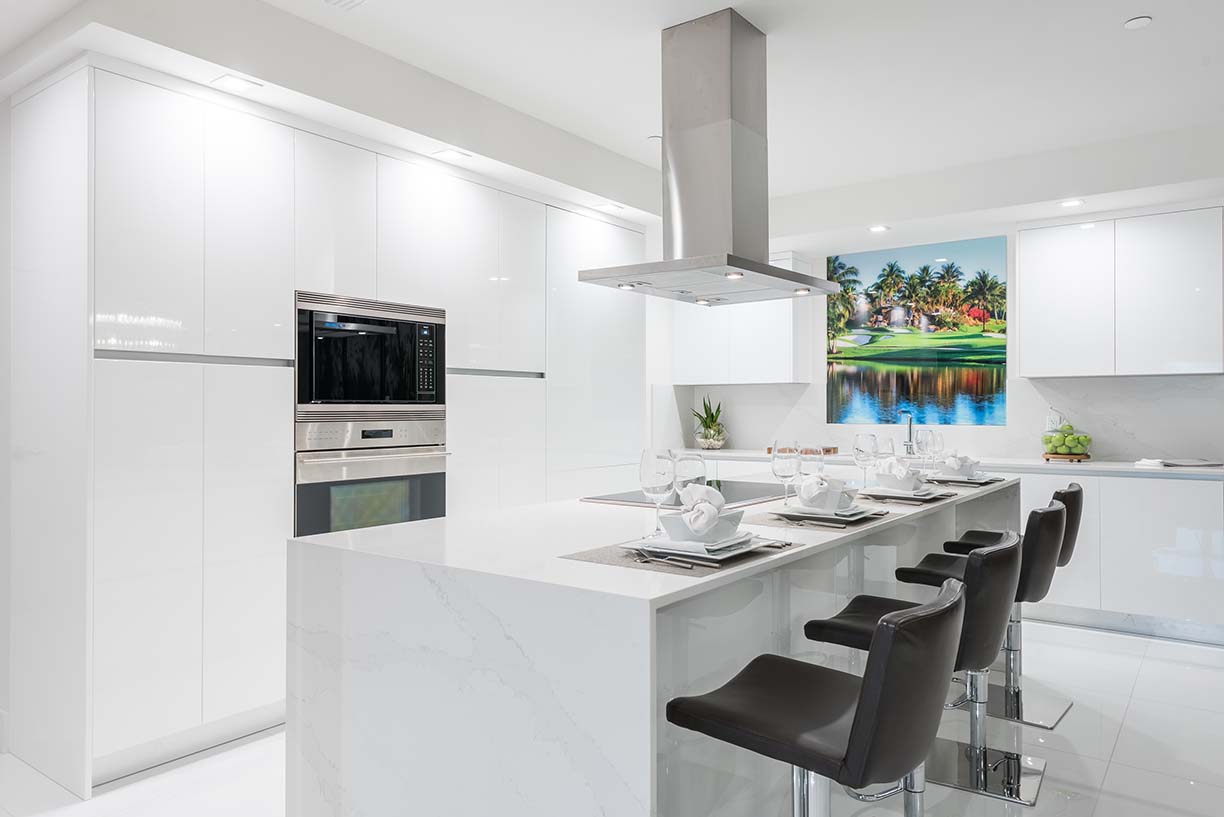
Rendering courtesy of RIVA Residences (Quartz) Rendering courtesy of Akoya Boca West (Quartz)
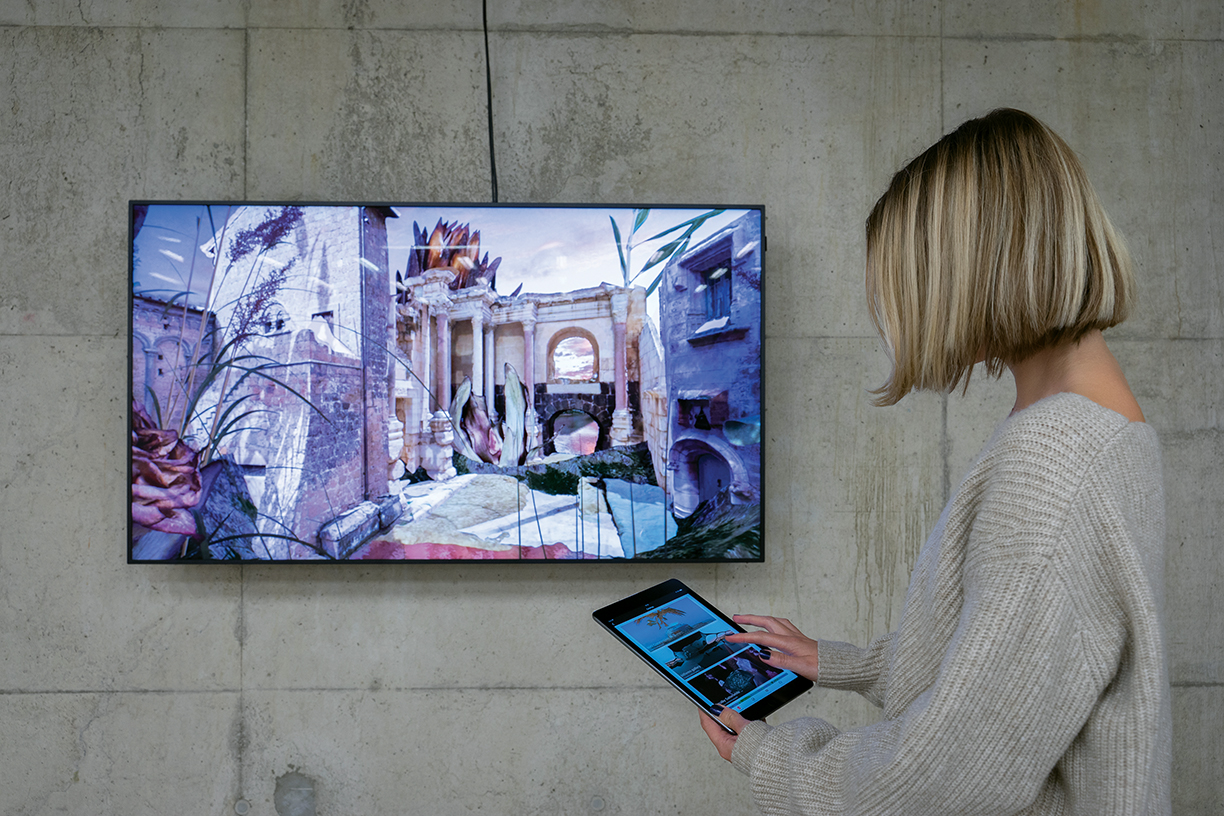
Photo courtesy Niio.
Smart technologies and artificial intelligence are changing the way we consume art.
While many treasured works of art are safely contained in notable museums or in the homes of experienced collectors, a new tide is cresting along the shores of the art curation field with the influx of digital art.
Digital art, more widely known as new media art, is an interesting sector of the art industry to define, even for Beryl Graham, who is a professor in New Media Art at the University of Sunderland. She notes that the roots of this art form have drawn inspiration from a range of movements, from conceptual artwork to video art, which also began in the 1960s.
“It’s broadly digital but [it’s also] the kind of art that works in different ways in different kinds of behaviors,” Graham notes. One fascinating example would be an exhibition of software art in which the software, sometimes even artificial intelligence-based artwork, can learn and grow on its own. Graham explains that an artist might start a piece of software and watch it evolve, perhaps give it a virus and watch, showing to the audience that the “end point isn’t quite under the control of the artist.”
Magdalena “Magda” Sawon, owner of the contemporary art gallery Postmasters Gallery in New York, says that the digital age has only heightened the senses of curators and artists, who are traditionally at the forefront of new developments in culture and technology.
“Technology is a tool,” she notes, “it is also a moving target and changing constantly. The question is to be aware of new developments and adapt it intelligently to one’s needs and benefit.” Fittingly, as artists have been harnessing the power of technology within the art industry, curators and galleries have had to “keep up with the times,” and embrace digital forms of artwork and the systems and methods in which they are displayed.
Donna Holford-Lovell, director of The North East of North festival (NEoN), notes how the incorporation of interaction and participation into art displays appeals to today’s technology-savvy audiences that have been gradually reinvigorating focus on the digital art world.
“The idea of ‘curation’ has become ubiquitous and our audience is seen to be curating many aspects of their own lives,” Holford-Lovell says. NEoN is an organized event that aims to advance the understanding and accessibility of digital and technology-driven art forms by having the artist and curator work together to translate “the spectacle of experience,” via digital platforms within physical spaces, like virtual reality, artificial intelligence, and even social media.
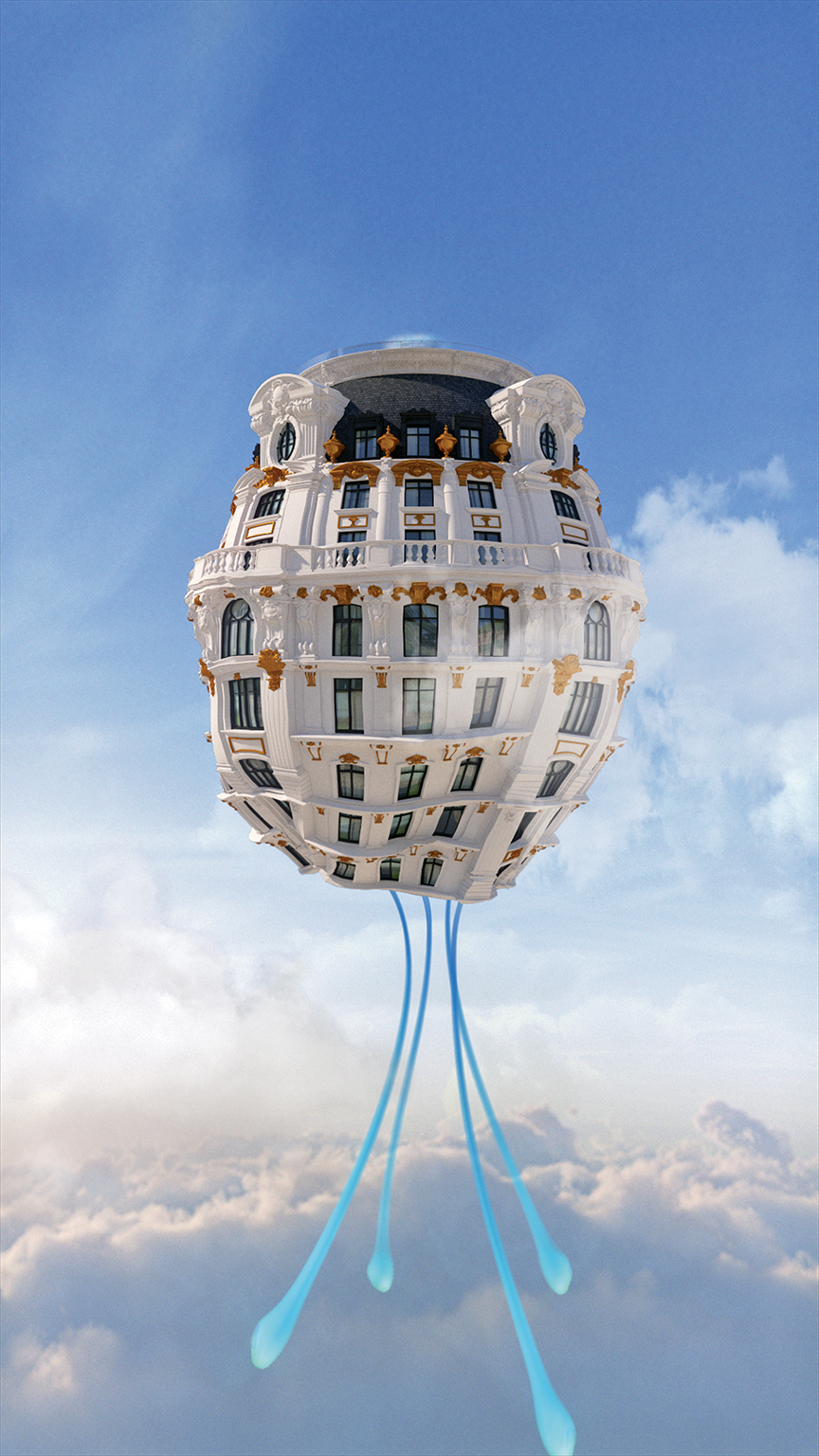
JONATHAN MONAGHAN (US)
The Phoenix and the Medusa (2018), Video, 7 min 69 sec, Edition of 30, Niio Commission Series.
With systems and platforms, from artificial intelligence to online-based forums, both artists and curators now are developing larger platforms and databases to contribute toward. As well as an educator, Graham is co-founder and editor of the Curatorial Resource for Upstart Media Bliss, or CRUMB, a resource for curators of new media art that aims to help overcome any challenges presented from this rise in digital art, from installations to networks of artists and individuals versed in these practices.
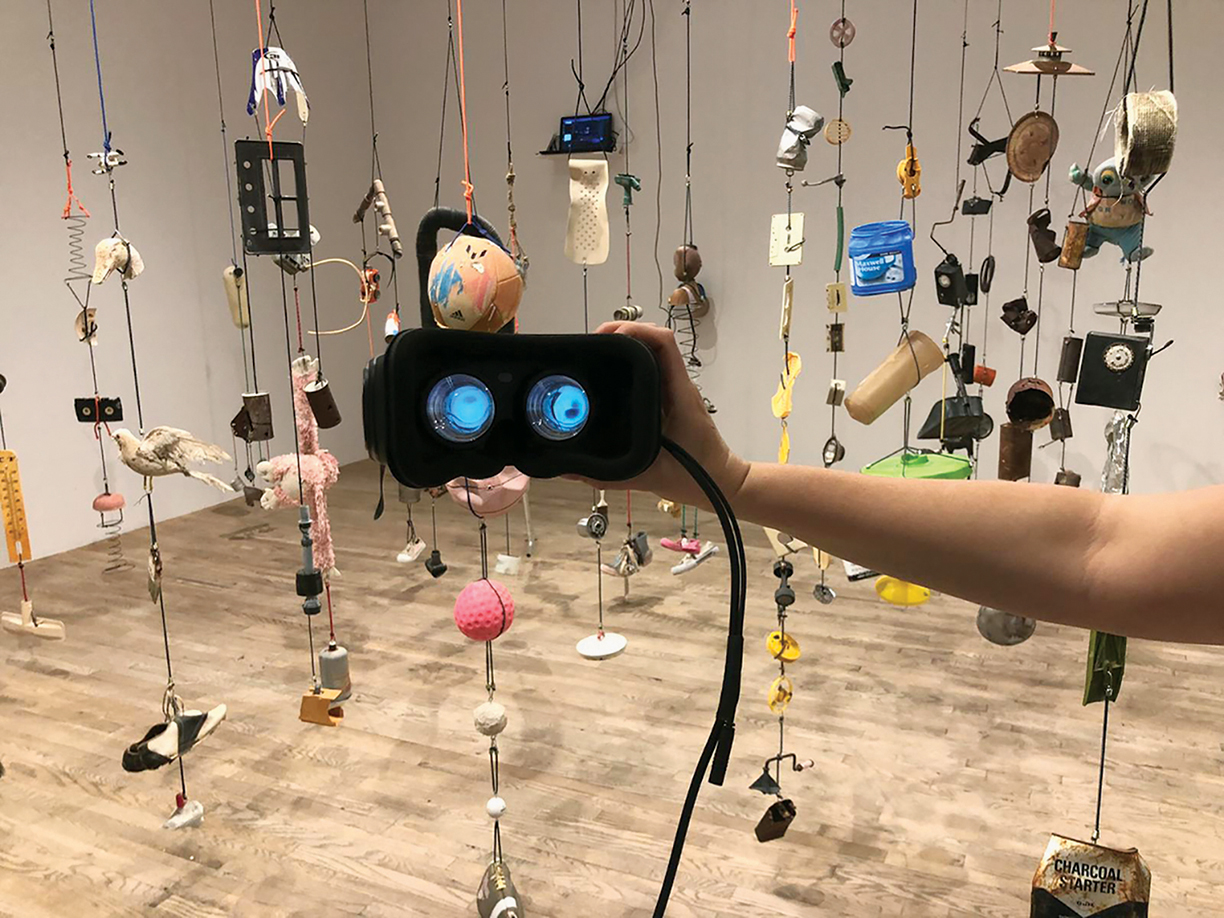
PERRY HOBERMAN
Suspensions (2018), VR and mixed reality installation, Postmasters April 2018.
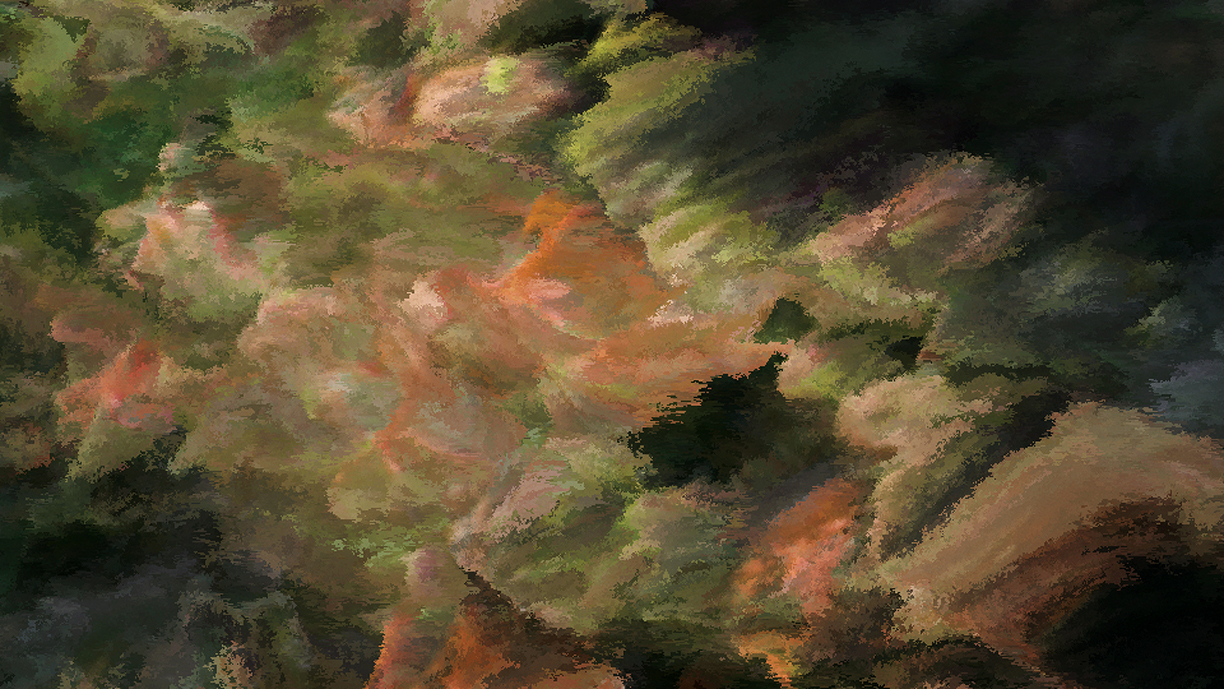
QUAYOLA (UK)
Camouflage (2018), Moving Image, 6 min 4 sec, Edition of 30, Niio Commission Series
On the luxury spectrum of art curation, Niio is a brand integrating digital art and technology-driven forms of collection and distribution that surges past the limitations of traditional artwork. Niio is an art and tech company aimed to enable the exposure of digital artwork in a time that to the company feels like a fourth industrial revolution.
“Art has always reflected the world we live in,” says Rob Anders, CEO and co-founder of Niio, “and artists will create their art with any tool they can access.” In today’s world, that tool has come to be technology. Anders, who understands the eclectic background of digital art from conceptual and video art, wanted to help designers and architects best fit homes with the art of today, and after speaking with top galleries he found that what’s really needed are new models of both the business and technological side that reach a broader audience — even better: one with a subscription.
“We envision a world where in homes people will have more digital canvases with interactive or immersive works, all on a centralized connected system that can very easily change,” Anders says, with access to top artists in the world in this ecosystem of artists, galleries and collections all on the Niio platform. Luckily, the CEO notes, the technology is “already there,” from artificial intelligence in devices like Amazon’s Alexa devices to smart televisions, all devices that can easily work with the Niio platform to display digital artwork.
To those interested in having access to the “world’s finest art accessible on-demand,” Niio is open as a limited edition membership at about $5,000 a month, with access to curated exhibitions and collections, or art “playlists” of over 7,500 art pieces on the platform that can be easily changed and displayed on devices like smart TVs, projectors, screens, et cetera, which can be installed by Niio technicians as well.
“Art curation is telling a particular story,” he says. “In order to give people these digital works, it’s not about just finding the individual works, it’s about giving people the ability to learn about the works they are looking at,” he says.
New York designer Aimée Wilder explores Eudaimonia, a Greek word commonly translated as happiness or “human flourishing,” in her collection of wallpapers, fabrics, rug and accessories. From the effects of the moon on the evolution of the natural world to the impact of astrological phenomenon, Wilder captures the many ways surroundings can influence our psychological state, and contribute to overall wellness.
“This collection was born through finding balance and stability in my own life,” says Wilder. “Once I learned that living to work instead of working to live, along with incorporating methods like Vedic meditation and natural healing into my daily routine, was able to create a peaceful environment around me, I hoped to thoughtfully reflect that feeling in each design.”
Eudaimonia consists of two wallpaper and fabric patterns, Pyramide du Soleil and Earthlight, with an additional rug pattern, Eclipse. All three patterns reflect the natural balance between the Earth, the Sun, and the Moon, evoking the beauty of cosmic balance. With this collection, Wilder introduces a new construction for commercial fabrics, tested for 50,000 double rubs and available with a range of protective coatings including anti-microbial and stain coating. In addition, for the first time, Wilder will offer wallpaper printed in Brooklyn, New York, where she resides and operates her design studio.
Pyramide du Soleil is a subtly optical pattern manifesting the ancient Sun’s shadow and its balance with the earth, Pyramide du Soleil features pyramid and Sun as they represent the illusive quality of time. It integrates pyramids and circles with sophisticated diagonals and horizontal stripes, inspired by the continuous synchronicity that exists between the earth and the Moon.
Earthlight focuses on the waxing and waning cycles of the Moon’s phases in an eye-catching, geometric pattern across wallpaper and fabric design. Named for the scientific phenomenon in which sunlight reflected from Earth’s surface indirectly illuminates the otherwise dark side of the Moon, Earthlight is sure to brighten any space.
Eclipse showcases the inversion of colors in this rug design suggests the effects of an Eclipse, a harbinger of change in the daily life that acts as a guiding hand when questioning one’s path. With a boldness that invokes a new take on a vintage aesthetic, the Eclipse rug comes in a range of warm tones that will add a welcoming touch to a room.
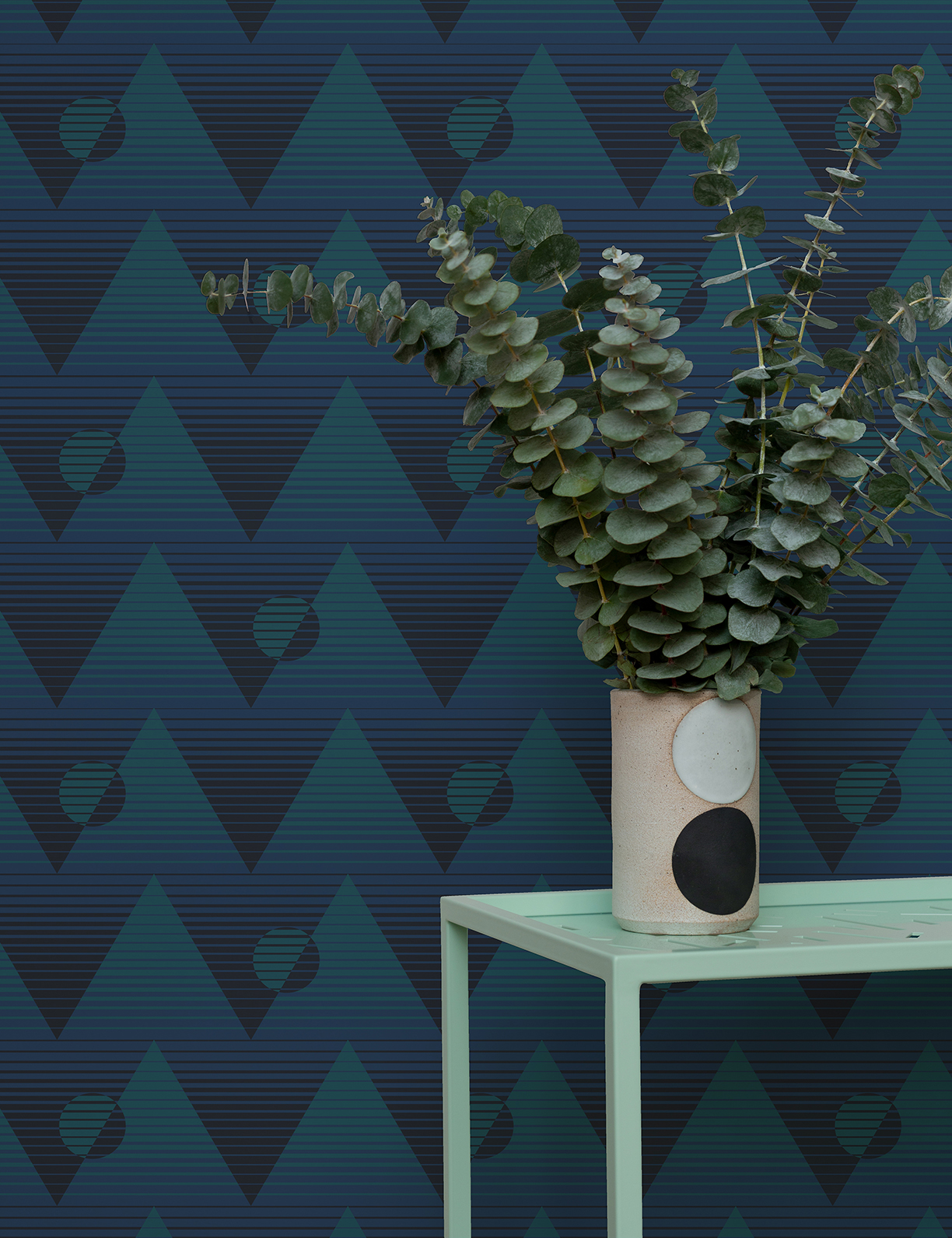
Pyramide du Soleil
Photos courtesy Aimee Wilder.

Eclipse
Photo by ©Dylan Chandler 2018.
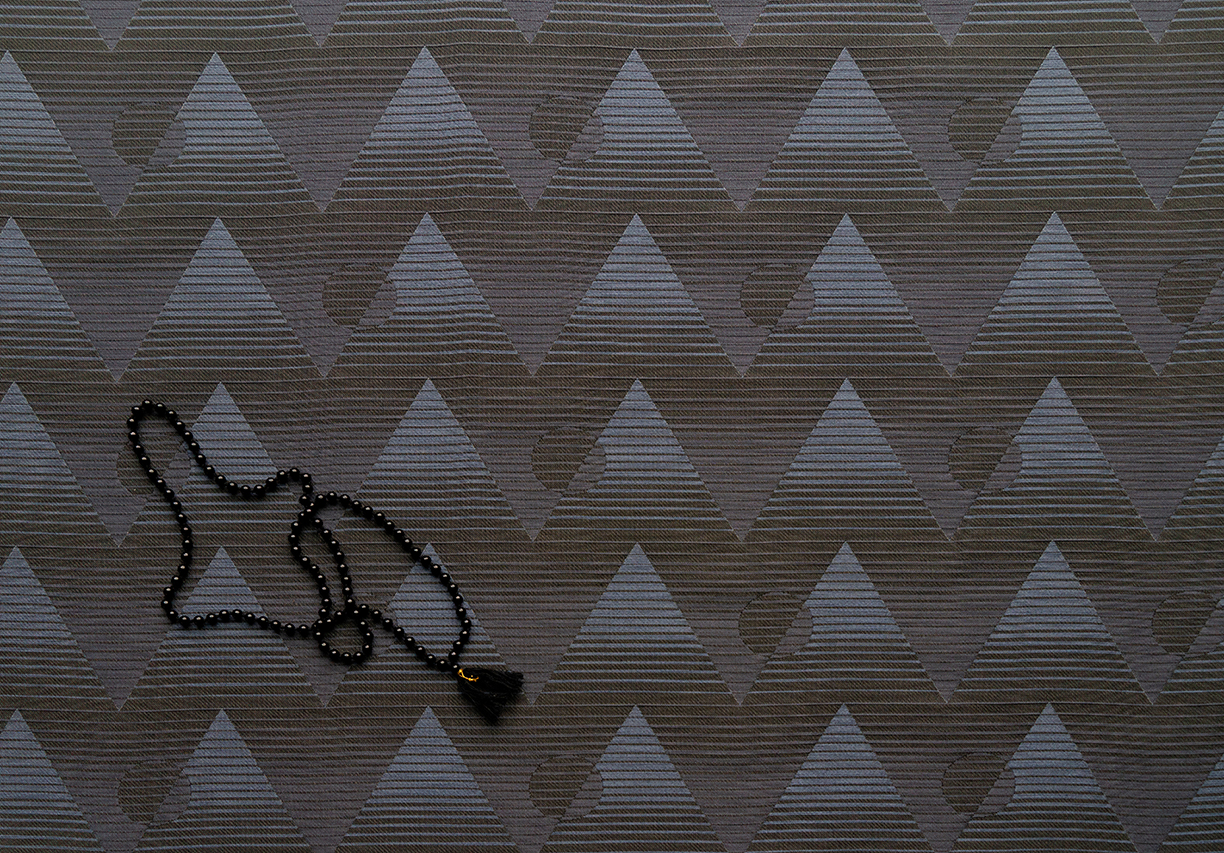
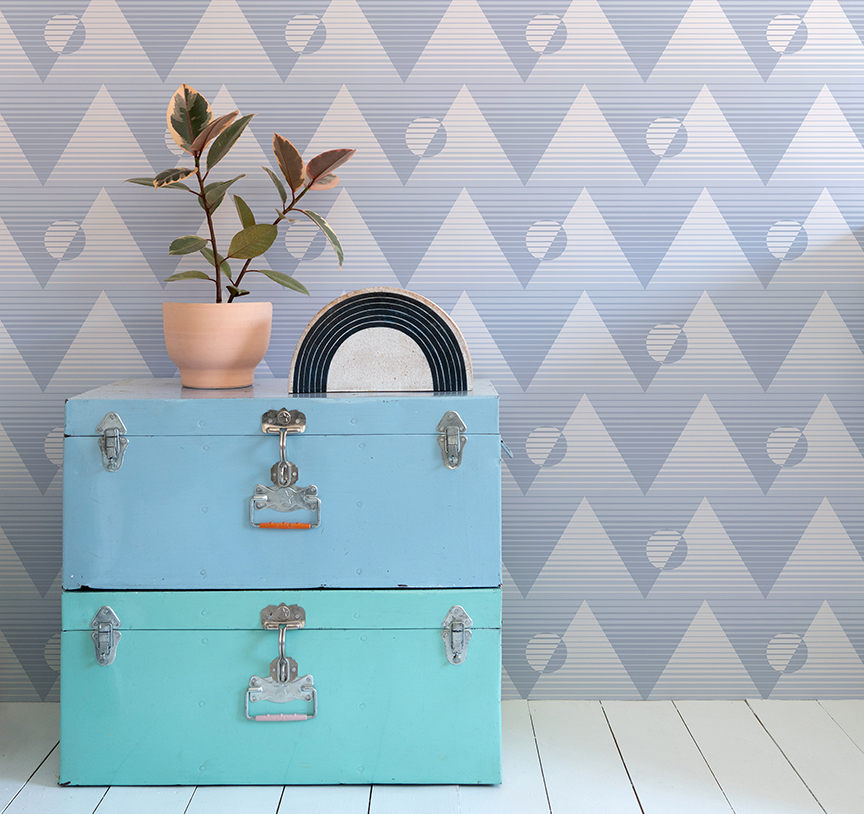
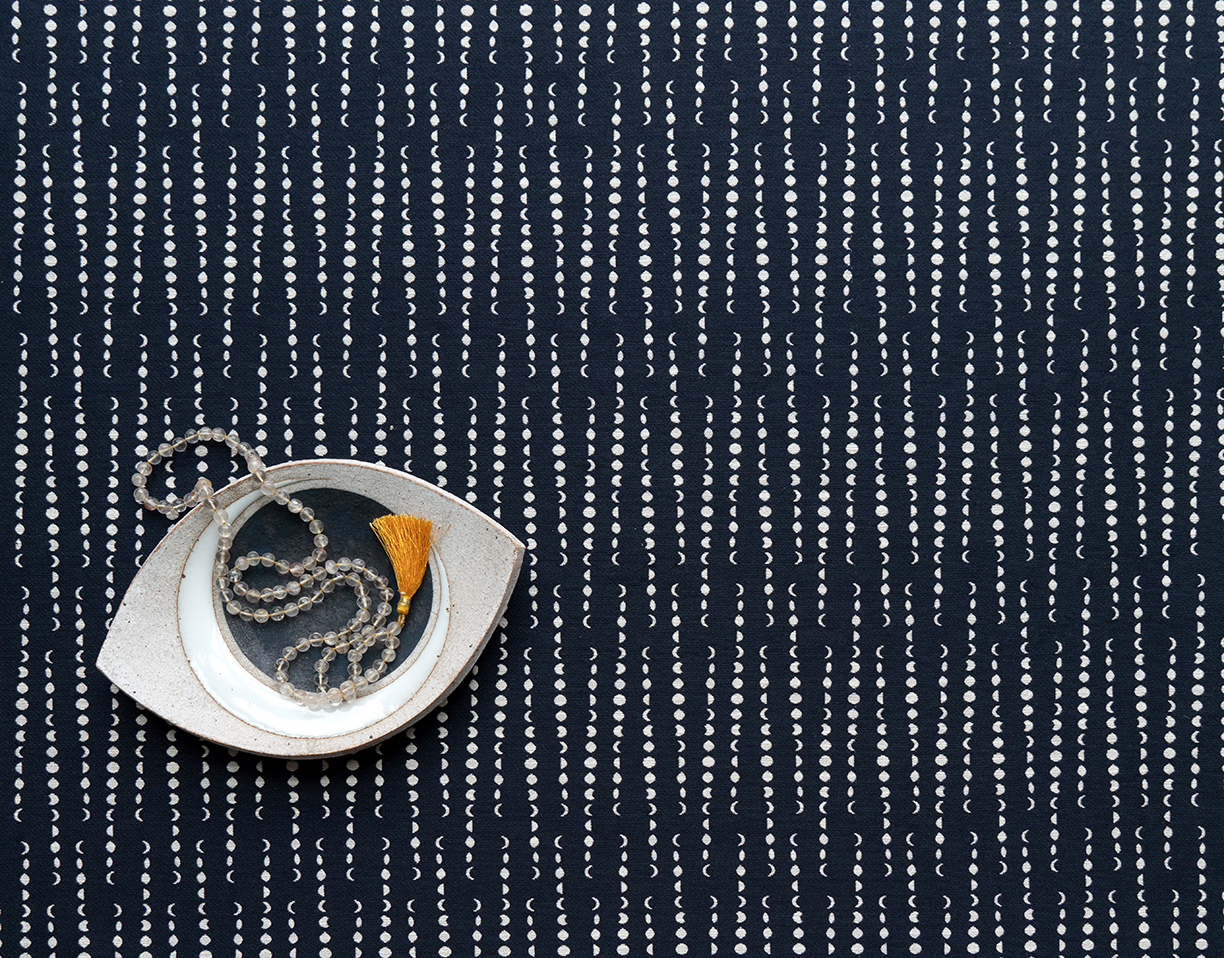
Earthlight
Photos courtesy Aimee Wilder.
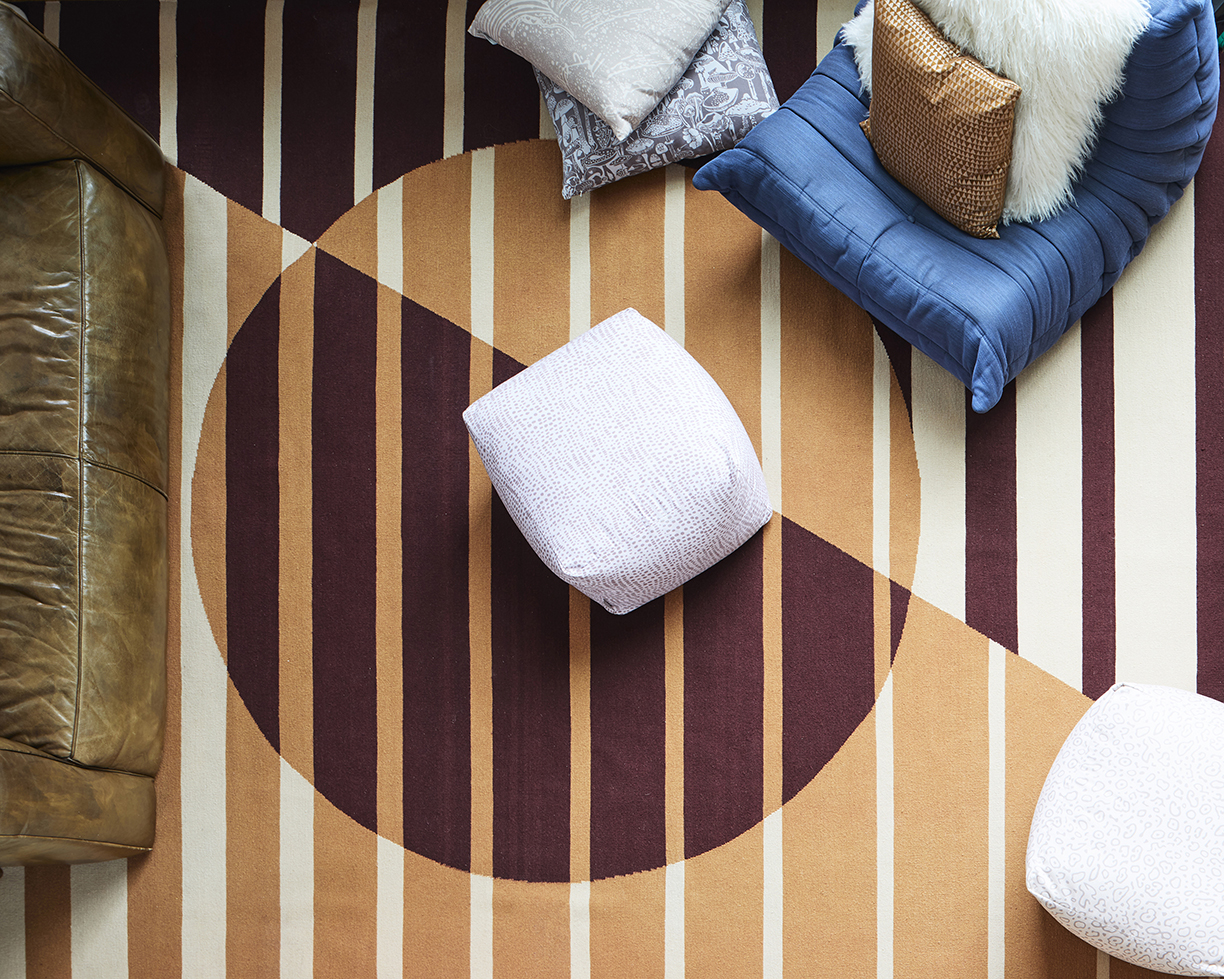
Thermador, the iconic luxury home and kitchen appliance brand, is kicking off its fourth Kitchen Design Challenge, with new categories and prizes, allowing professional designers, builders, architects, remodelers, kitchen dealers and — for the first time in Thermador contest history — students to get involved.
All 44 of the regional winners will also win a trip for two to the exclusive gala in Southern California in 2020, where the national winners will be announced.
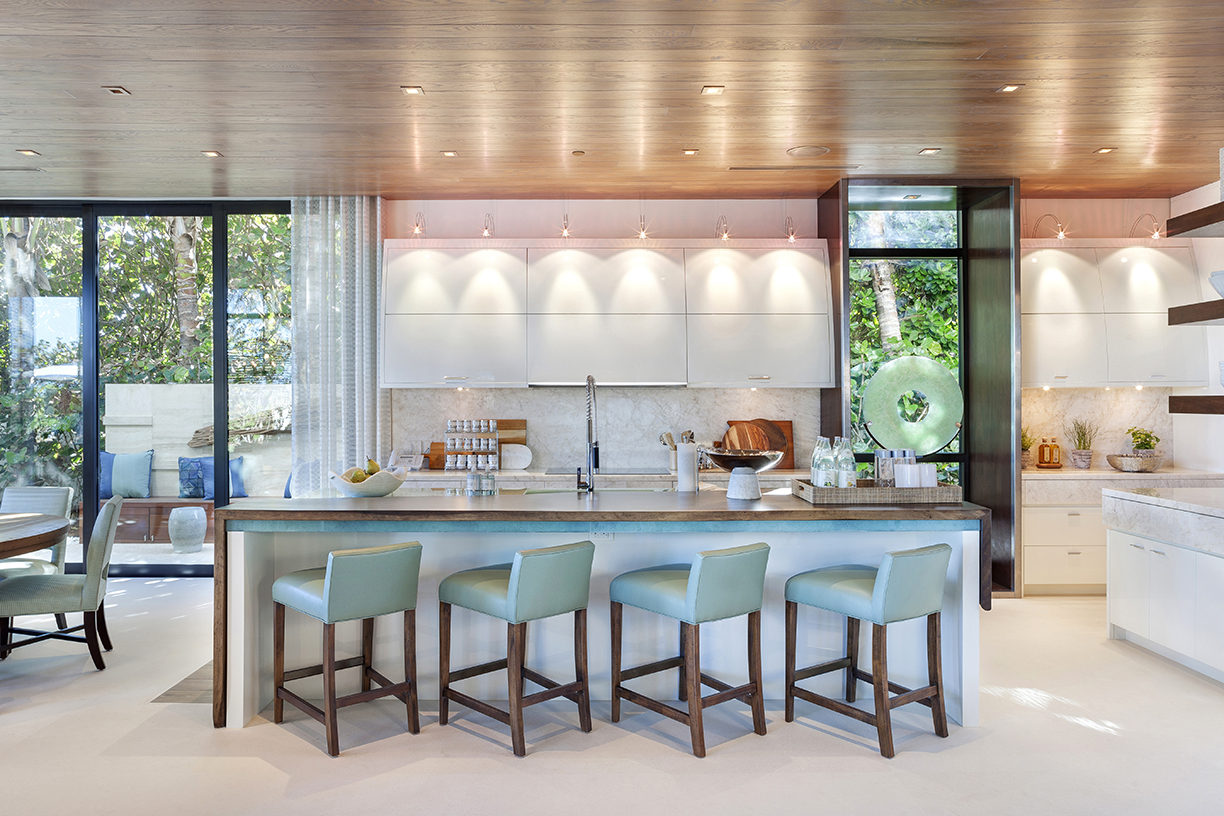
Image courtesy of Marc Thee
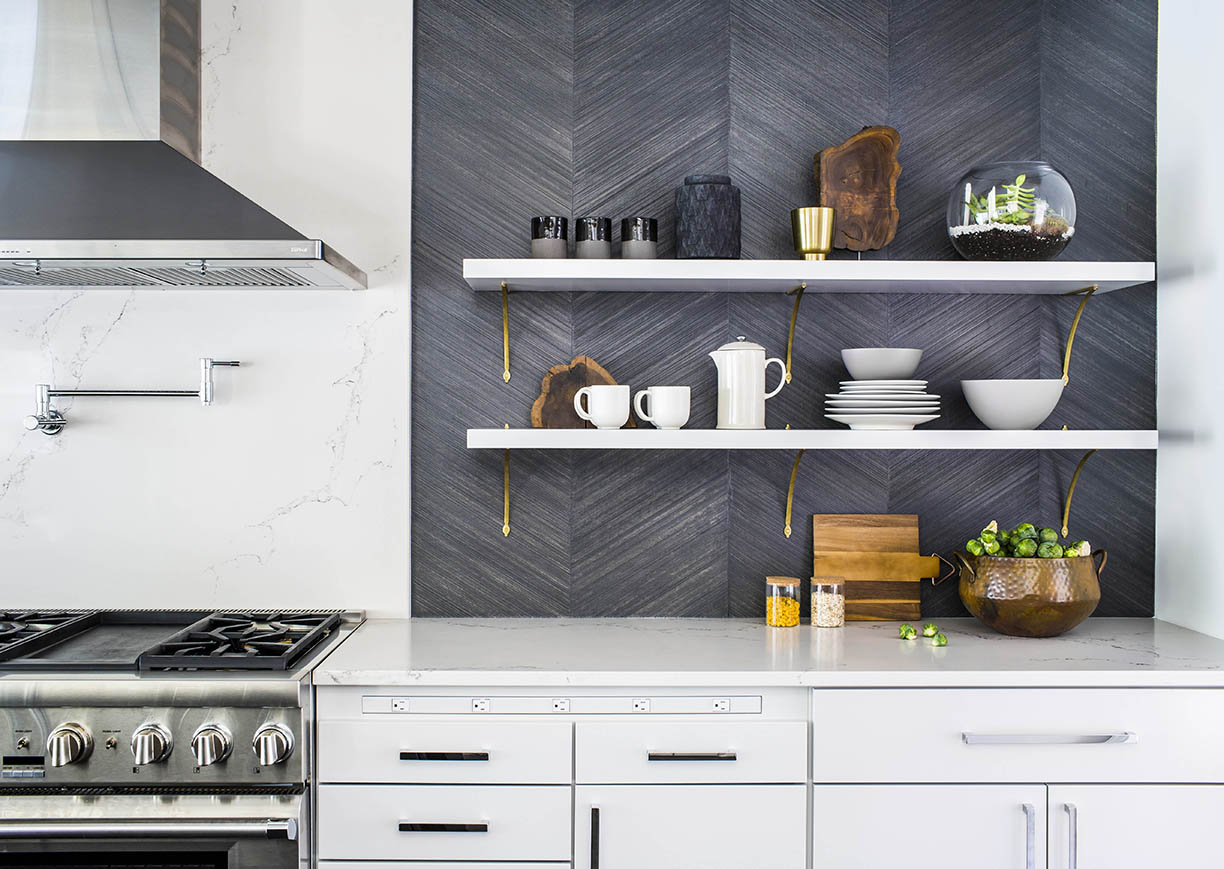
Image courtesy of Ili Hidalgo
“When it comes to marrying groundbreaking innovation and stunning design, Thermador leads the industry — empowering consumers and trade professionals to make bold statements throughout the home,” said Beatriz Sandoval, director of brand marketing for Thermador.
Encouraging the established and flourishing design-build communities to showcase their creativity in any design style, this year’s Kitchen Design Challenge aims to attract the most innovative projects yet, with four all-new categories for submission: Exceptional Kitchen, Compact Kitchen Suite, Original Innovator/Out of the Box Space and the Student Concept Kitchen.
For Exceptional Kitchen, one national winner will receive a $25,000 grand prize, one second-place winner will receive a $15,000 prize, and one third-place winner will receive a $10,000 prize.
In the Compact Kitchen Suite category, the national winner will receive a grand prize of $5,000 for crafting a culinary space within 200 square feet and containing at least three primary Thermador products.

Image courtesy of Constance Riik
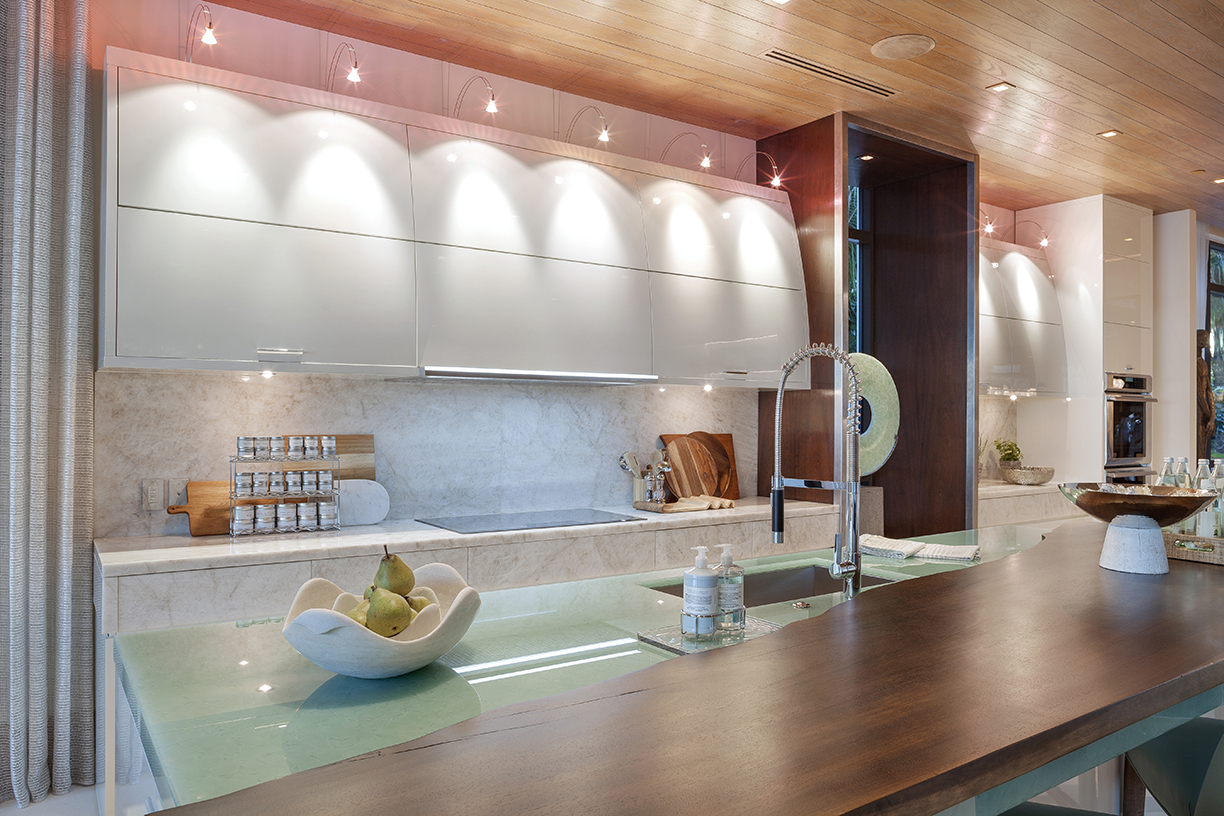
Image courtesy of Marc Thee
The national winner of the Original Innovator/Out of the Box Space will receive a $5,000 prize for designing a space outside of the kitchen such as a wet bar, personal gym, wine cellar or game room. The space must have at least two Thermador products.
And for the first time, the Thermador Kitchen Design challenge is including students in the competition. In the Student Concept Kitchen category, one national winner will receive a $5,000 cash prize for designing an exceptional kitchen for a hypothetical client. The space must be a minimum of 200 square feet, include at least three primary Thermador products and cost a maximum of $250,000.
Two more categories are also part of the challenge, including the Designer’s Choice, which will be chosen at the gala and receive a $5,000 cash prize, and the Fan Favorites category, in which five winners will be selected in a separate contest held in 2021 to receive a $1,000 cash prize each.
By breaking boundaries and the status quo in terms of kitchen design, vision and creativity, Thermador is allowing for others to do the same, creating bold ideas and bringing them to life.
Cocosan Villa, nestled high in the San San Estate in Portland Jamaica, forms part of the Geejam Collection. It offers a uniquely designed take on contemporary Jamaican living. This villa features six bedrooms with balconies overlooking scenes of the beautiful parish of Portland and eight bathrooms.

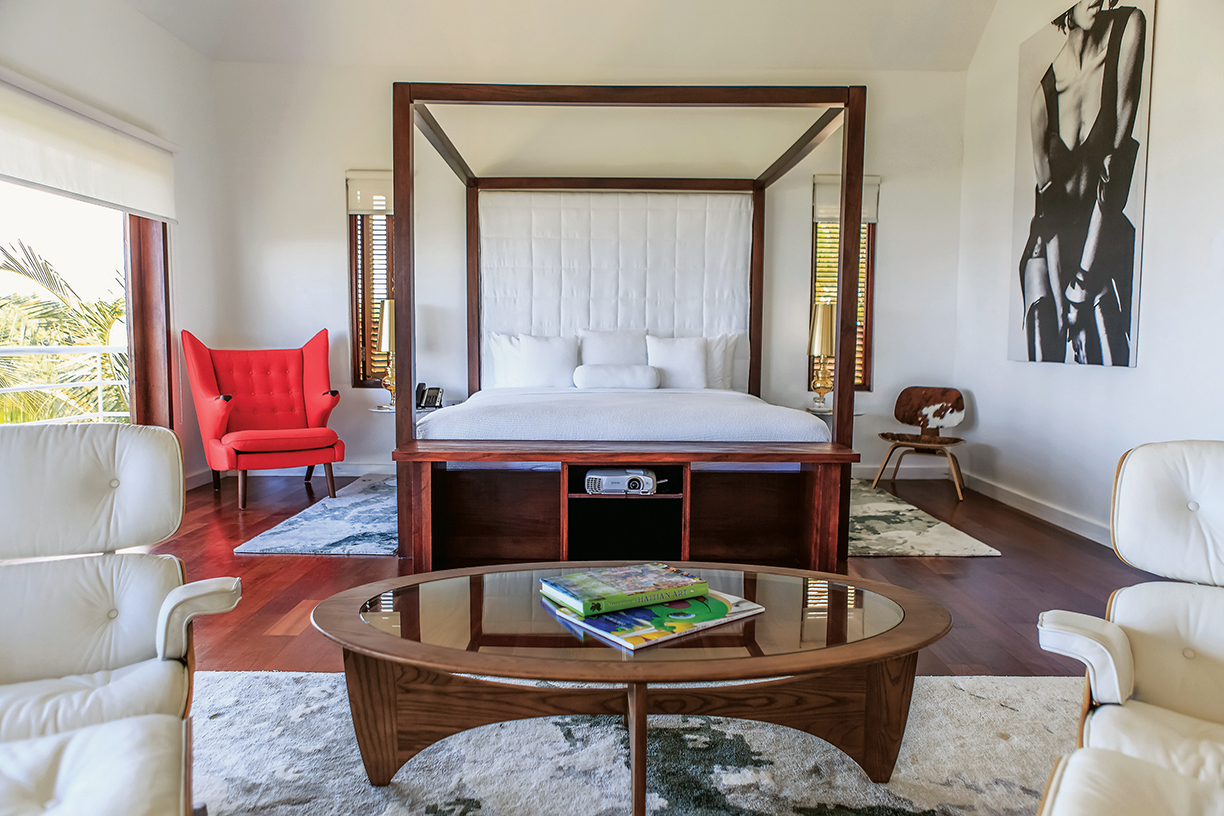
Cocosan’s upscale design is poised with elegance and modern day comfort, while engaging the tropical aesthetic of the Caribbean. The property, listed by Kaili McDonnough Scott of Coldwell Banker Jamaica Realty for $2.9 million, also boasts a gym, sauna, heated lap pool and Jacuzzi, and state-of-the-art kitchen.
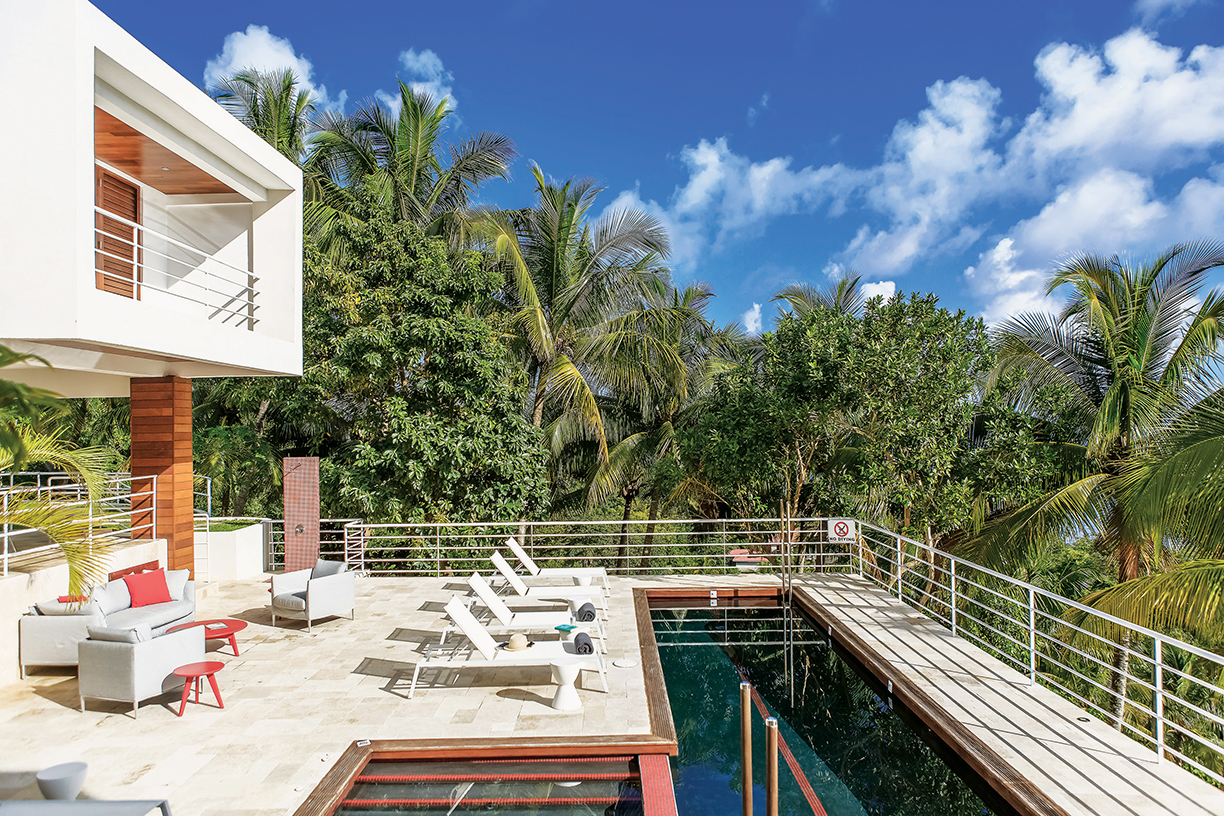
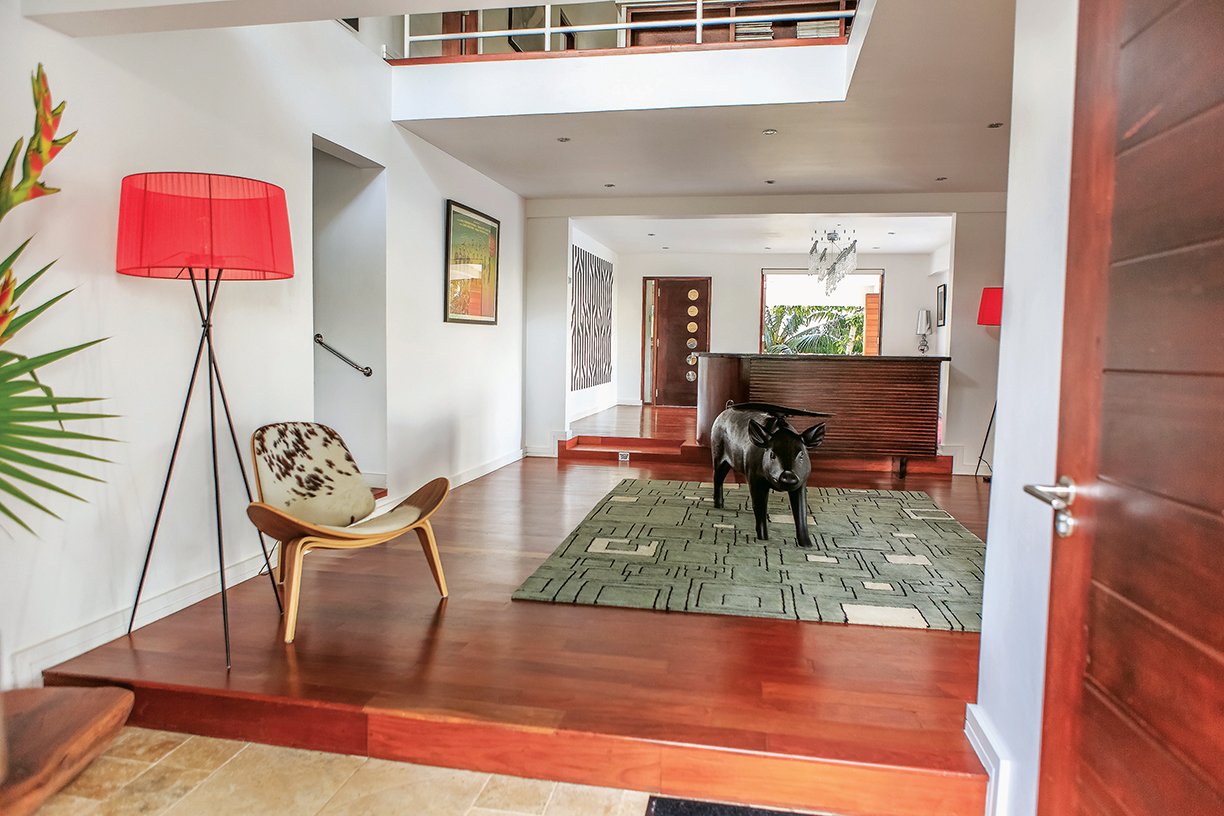
The powder room used to be an afterthought, but for people who entertain this space has become an important design moment. In fact, when it comes to luxury condo buildings, developers are now going above and beyond to create distinct powder rooms that leave a lasting impression – with details like custom wall paneling, unique custom lighting and specially made marble vanities that highlight today’s style trends. To perfect your own powder room, we’ve come up with a few tips based on stylish New York residences.
Embrace the Selfie Lighting
Often small spaces, powder rooms can still offer a great place to capture that perfect Instagram photo, especially if there is good lighting. To create the perfect selfie space, lighting must be on point to not only adequately brighten up the space, as well as both capture the best pose and highlight the style and decor of the room.
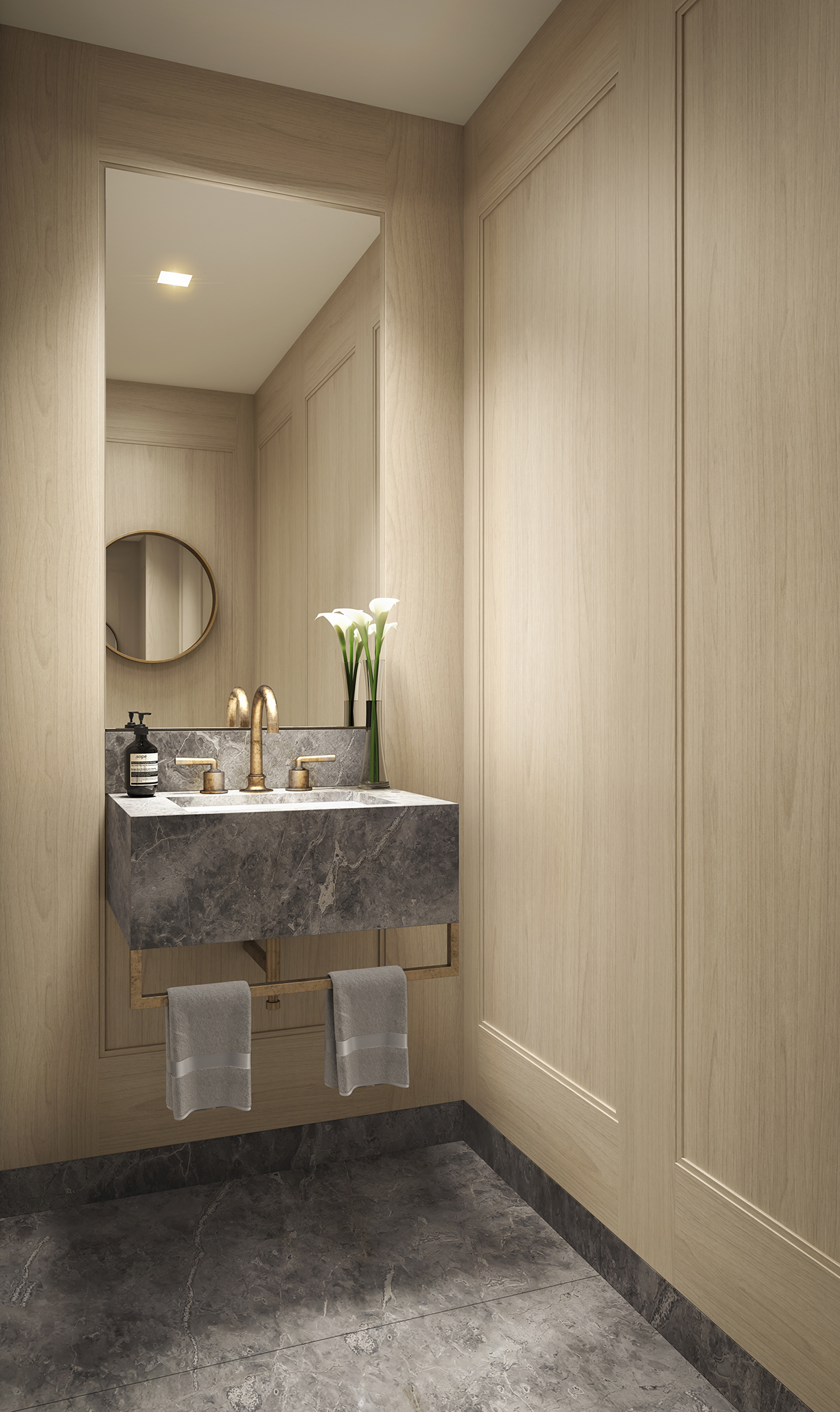
350 West 71st Street
Photo by Alan Hill / Redundant Pixel.
There is some flexibility in this regard. For example, this chic powder room located in one of the residences at 350 West 71st Street offers flawless, bright lighting, making it the perfect spot to apply makeup.
Soft light, however, offers some of the best places to take photos. A great example is seen at 555 West End Avenue, where the mellow glow of the lit mirror highlight the powder room’s luxurious features, from the custom Calacatta gold countertops to the Lefroy Brooks fixtures.
With this lighting choice, you achieve a warm, inviting aesthetic that people will spend trying their best to capture.
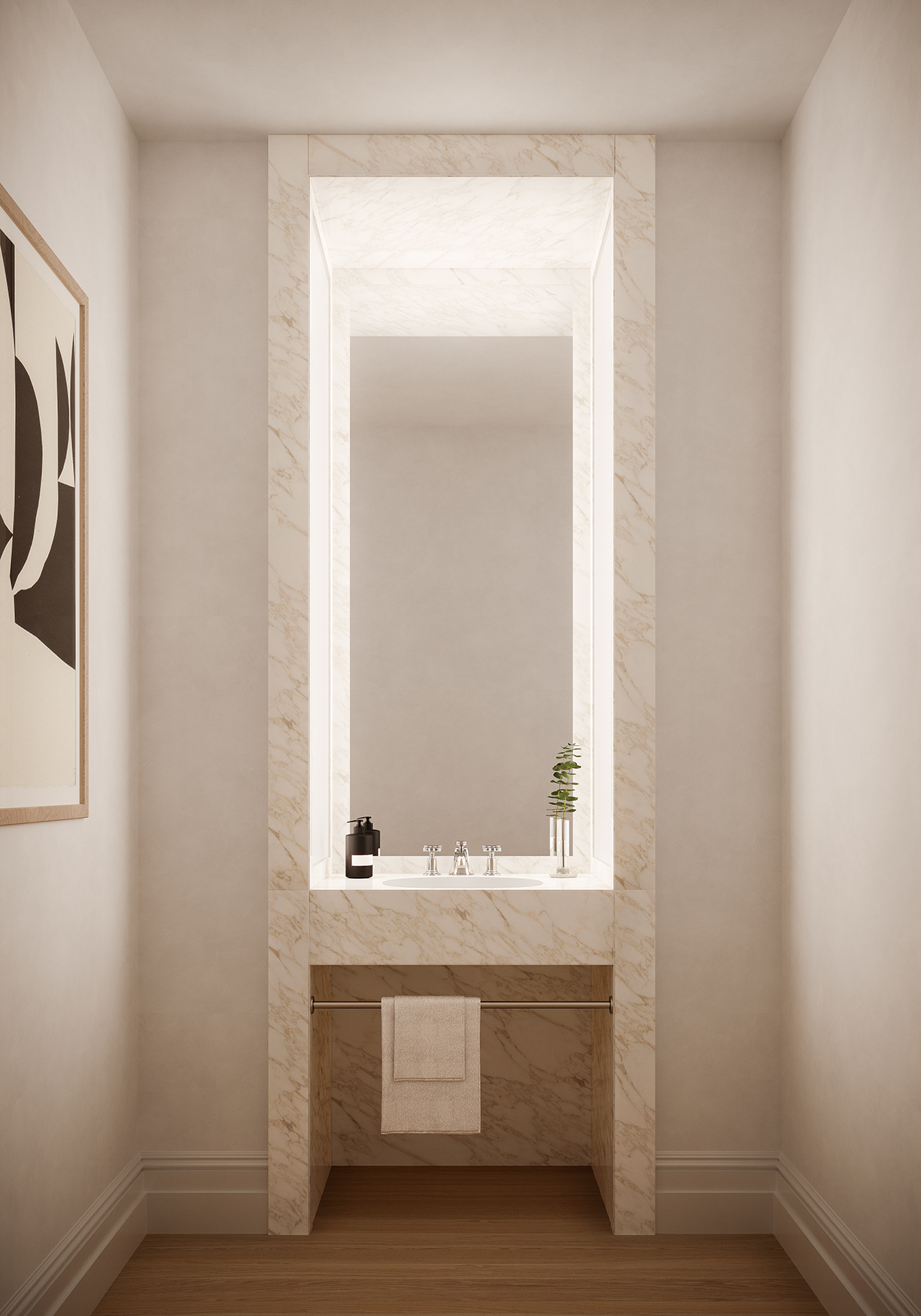
555 West End Avenue
Photo by Hayes Davidson.
Keeping Fashion-Forward
Staying on trend can sometimes be difficult when it comes to home design, so the best way to do so is highlight classic, elegant finishes that remain stylish over time, while incorporating accents and decor that is on trend. Some classic finishes are beautiful marble counters and sinks, black and white tiles or wallpaper, and metallic detailing.
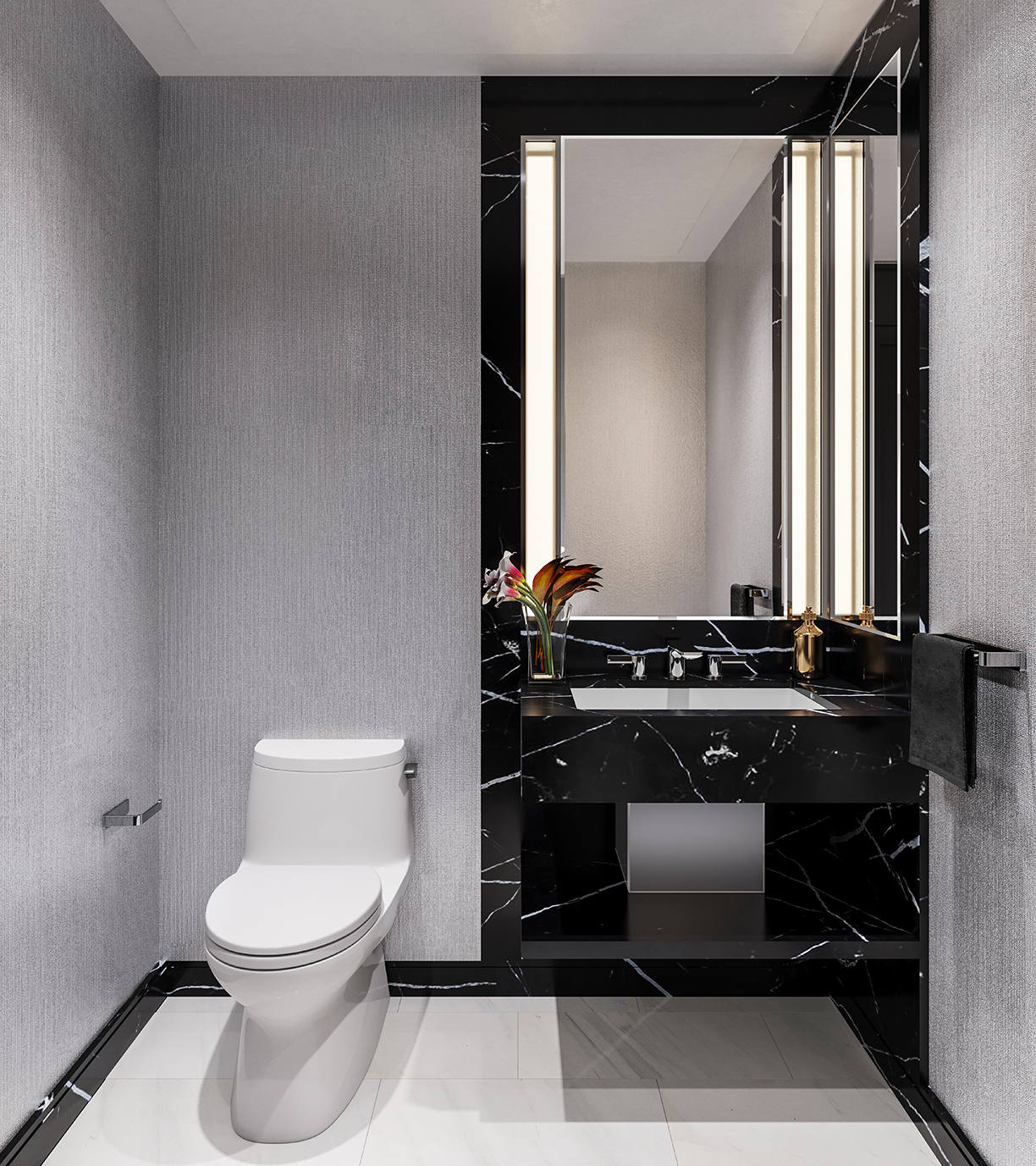
One Waterline Square
Photo by Noe & Associates with The Boundary.
Designed by celebrated architect, Robert A.M. Stern, 30 Park Place offers 157 residences, all managed by Four Seasons Hotels and Resorts.
Within the powder rooms of Penthouse 78B, marble vanities offer a minimalistic yet beautiful setting with its clean lines and silver accents, both elegant and modern.
The Champalimaud-designed powder rooms at One Waterline Square are jewel-box-like spaces fashioned in striking black and white marble.
Every bit as luxurious as the master baths, the sparkling powder rooms feature best-in-class materials and fixtures, including polished Bianco Dolomiti marble flooring, polished Nero Marquina marble vanities and feature walls, Dornbracht fittings, and more.

30 Park Place
Photo by 30 Park Place.
Customization is Key
No matter your style, custom finishes or accents are also a defining decor element that can make or break the style of your powder room. Detailed design elements and customized, select finishes make a strong modern statement, create warmth and elegance in every space. Not only will these be a unique focal point, but inspirational in design for those looking to spruce up their own spaces.
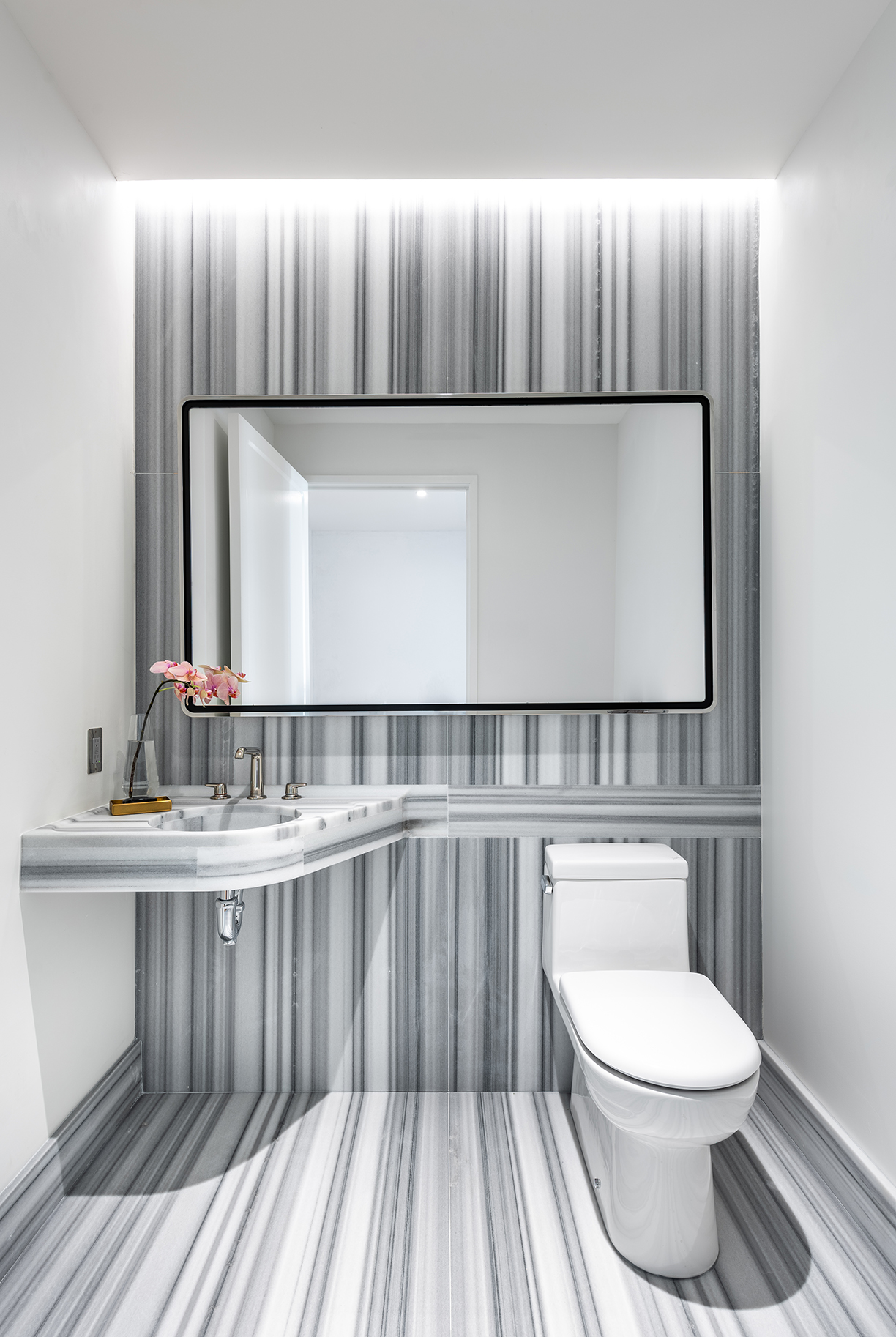
Greenwich West
Photo by Alan Tansey.
Located at 110 Charlton Street, Greenwich West’s interiors have been beautifully designed by star Parisian architect and interior designer Sebastien Segers, who is known for his work with clients such as Giorgio Armani, Christian Dior and more.
A standout within, the powder rooms at Greenwich West are outfitted in Zebrino marble with custom-designed curved vanities featuring Laufen toilets and Hansgrohe Axor Bouroullec collection fittings in polished nickel.
A contrast of black and white, Segers’ signature ogee edge shape makes this a statement room.
Custom designing everything in the 61 light filled residences at 40 Bleecker in NoHo, the powder rooms leave no detail unturned.
Within the powder rooms, hand-selected statuary marble envelops the area and a unique lighting design by Bill Schwinghammer.
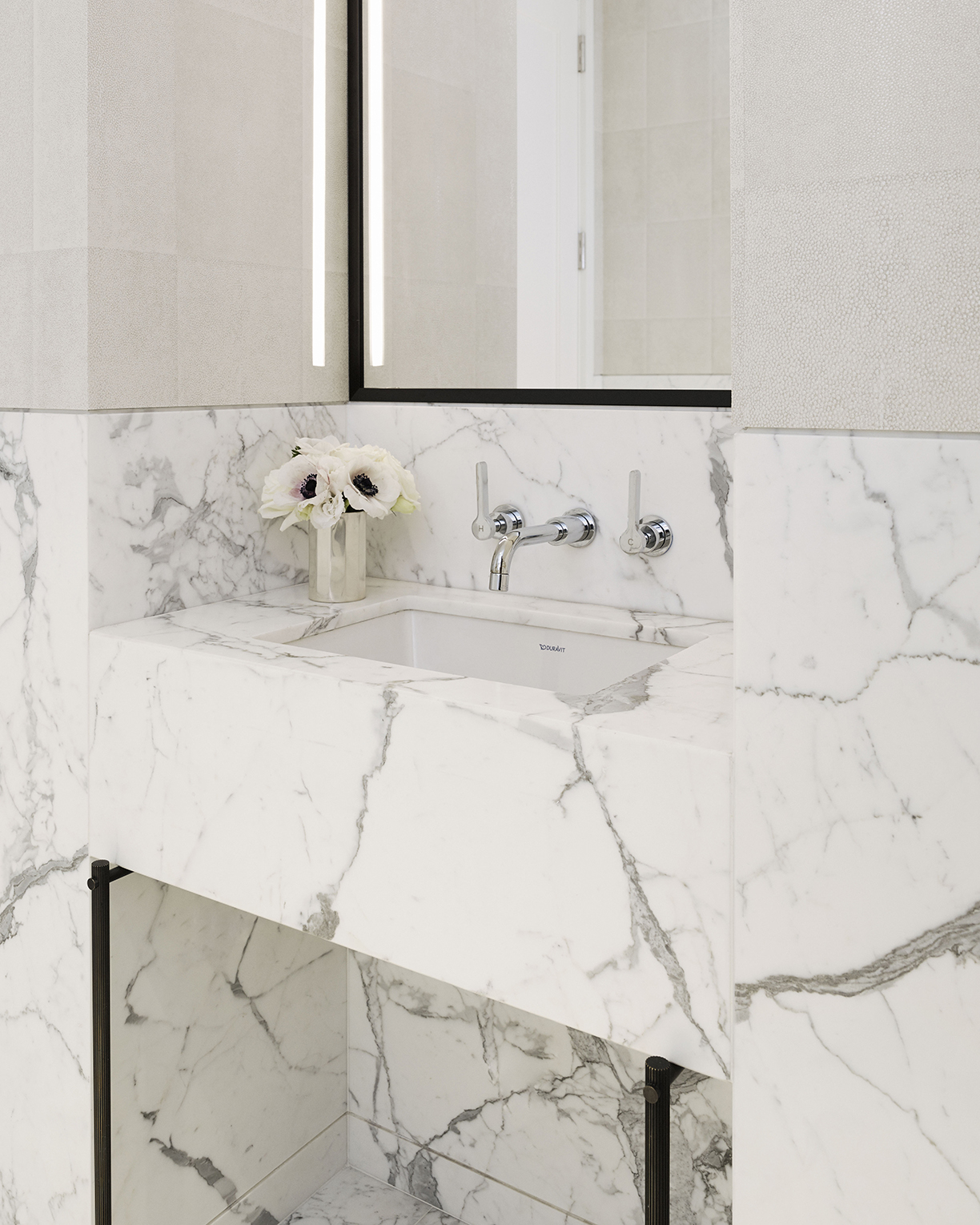
40 Bleeker
Photo by Bjorn Wallender.
Transform your space with the perfect area rug. Trust stylish finished designs or customize your space with a tailored project.
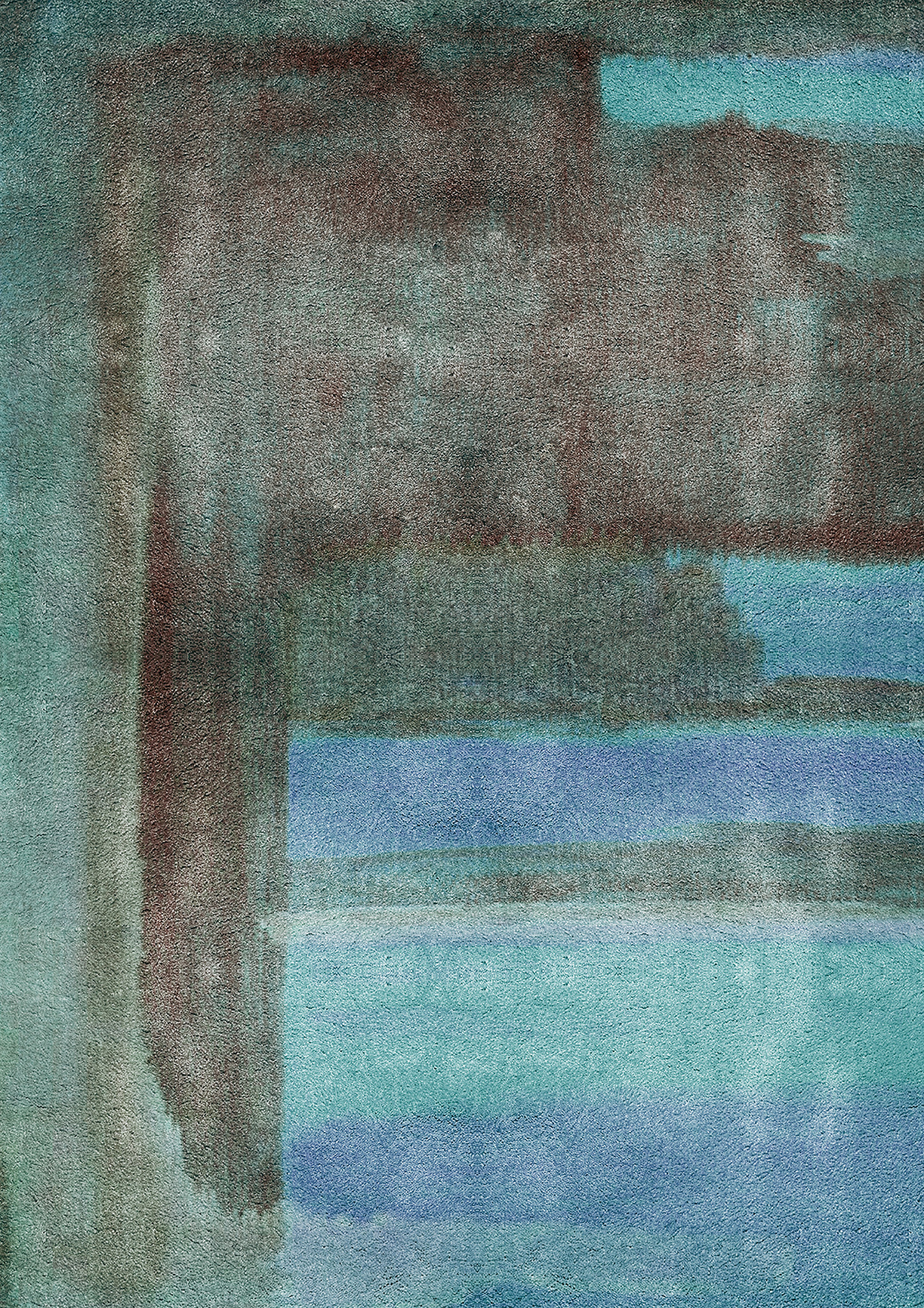
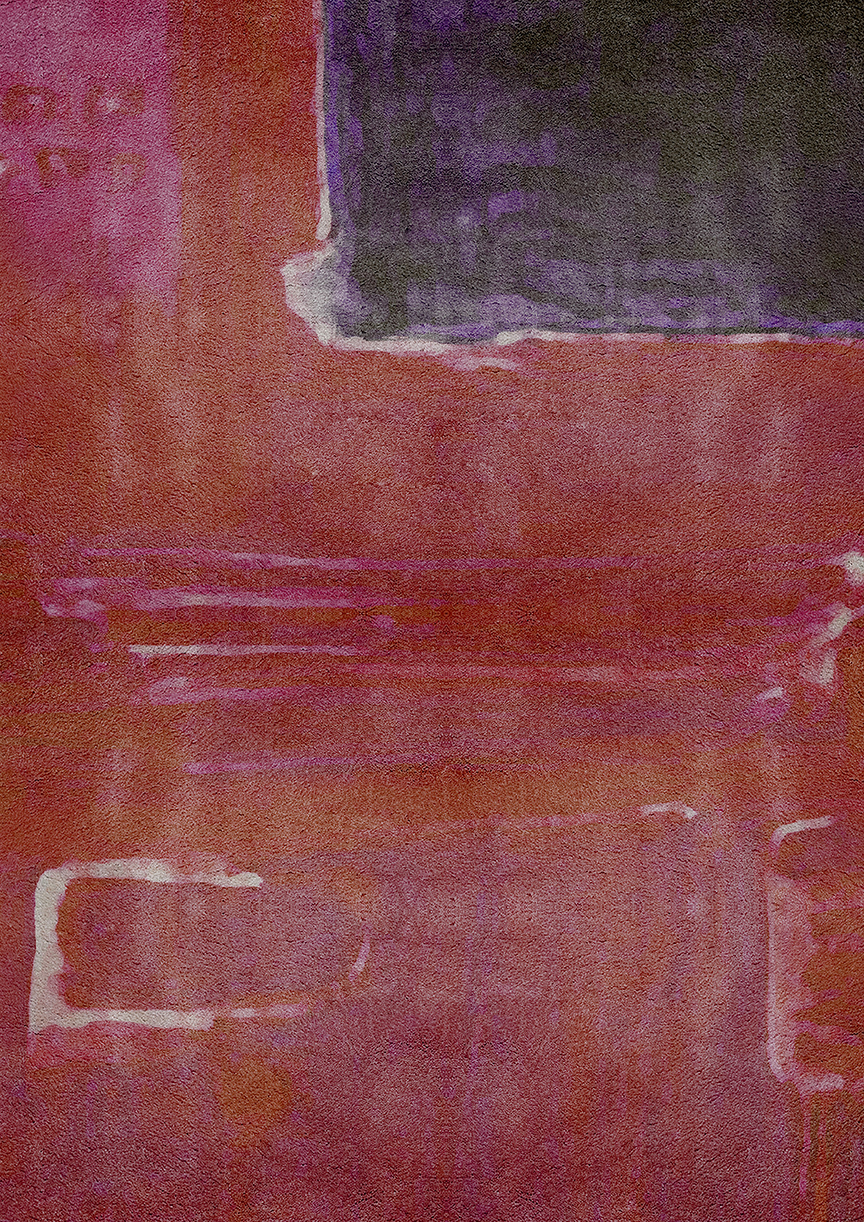
Customize Until You’re Content
Rug’Society offers a bespoke customization service that is flexible and fun. Customers choose from a variety of colors, shapes, patterns, and textures to create a rug they can enjoy for years to come. The company also offers the help of a brand expert to guide you through the process.
Complete any room in your home with a rug that is uniquely you. Whether you’re looking for warm colors and plush textures, or an elegant neutral rug, there’s plenty from which to choose.
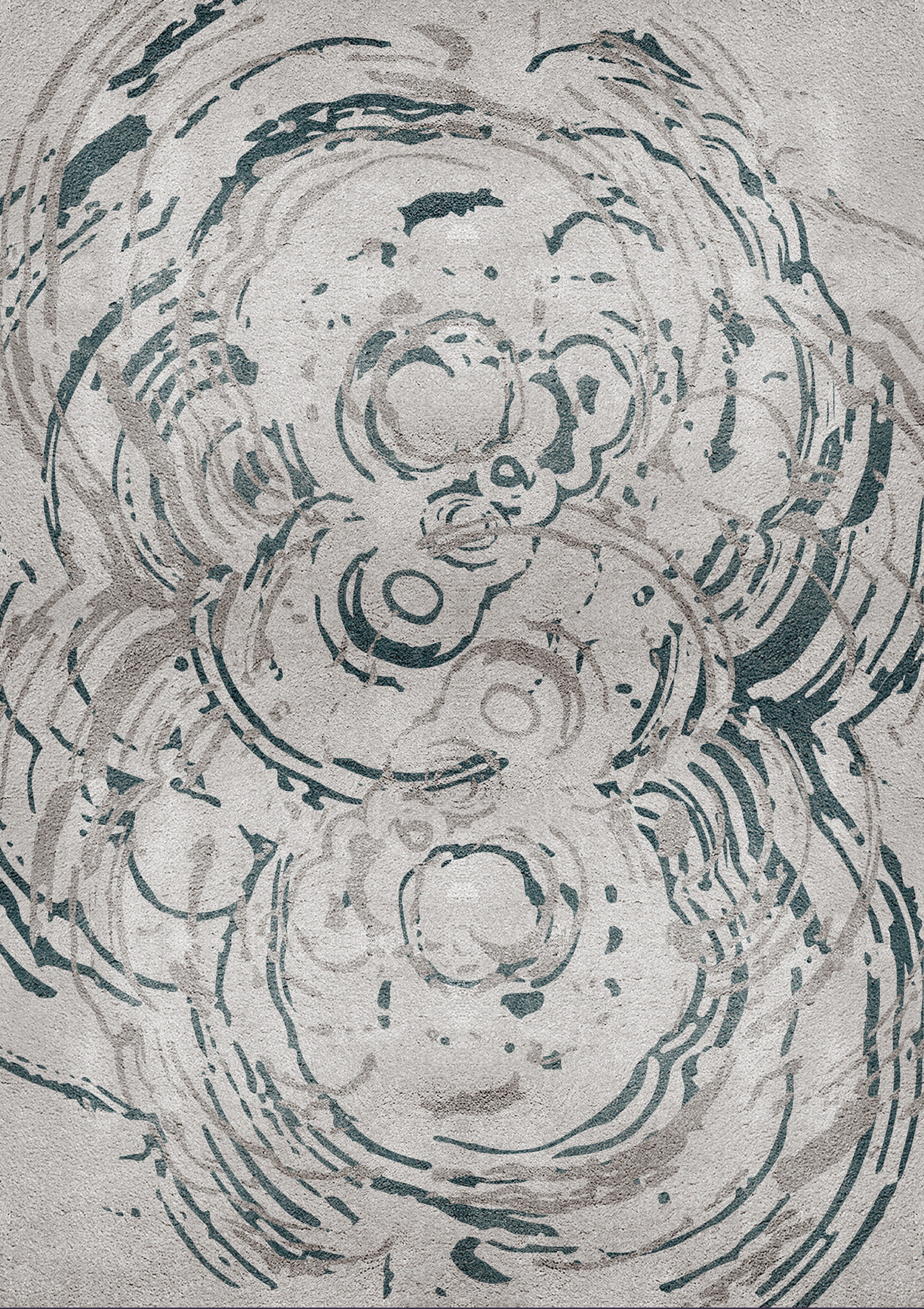
Choose the Right Rug for You
Bare floors are the perfect canvas for an inspiring, conversation-starting area rug and they are often a focal point in a room. Choose a larger area rug to create a gathering space in your living room.
For the bedroom, create a cozy domain by placing a rug under your bed allowing it to extend forward. This can give the appearance of a bigger space full of comfort.
Consider what type of traffic a rug will endure before purchasing. If you need a rug for your living room, remember to choose something that can withstand the occasional coffee spill or stray crumb.
Darker colors, whether they are on your walls or your floor tend to make a space feel smaller, while lighter shades can open a room up, making it feel larger.
Place you’re furniture along the edges of a beautiful rug making it visible for you and your guests to fully enjoy. This also helps create a more spacious feel.
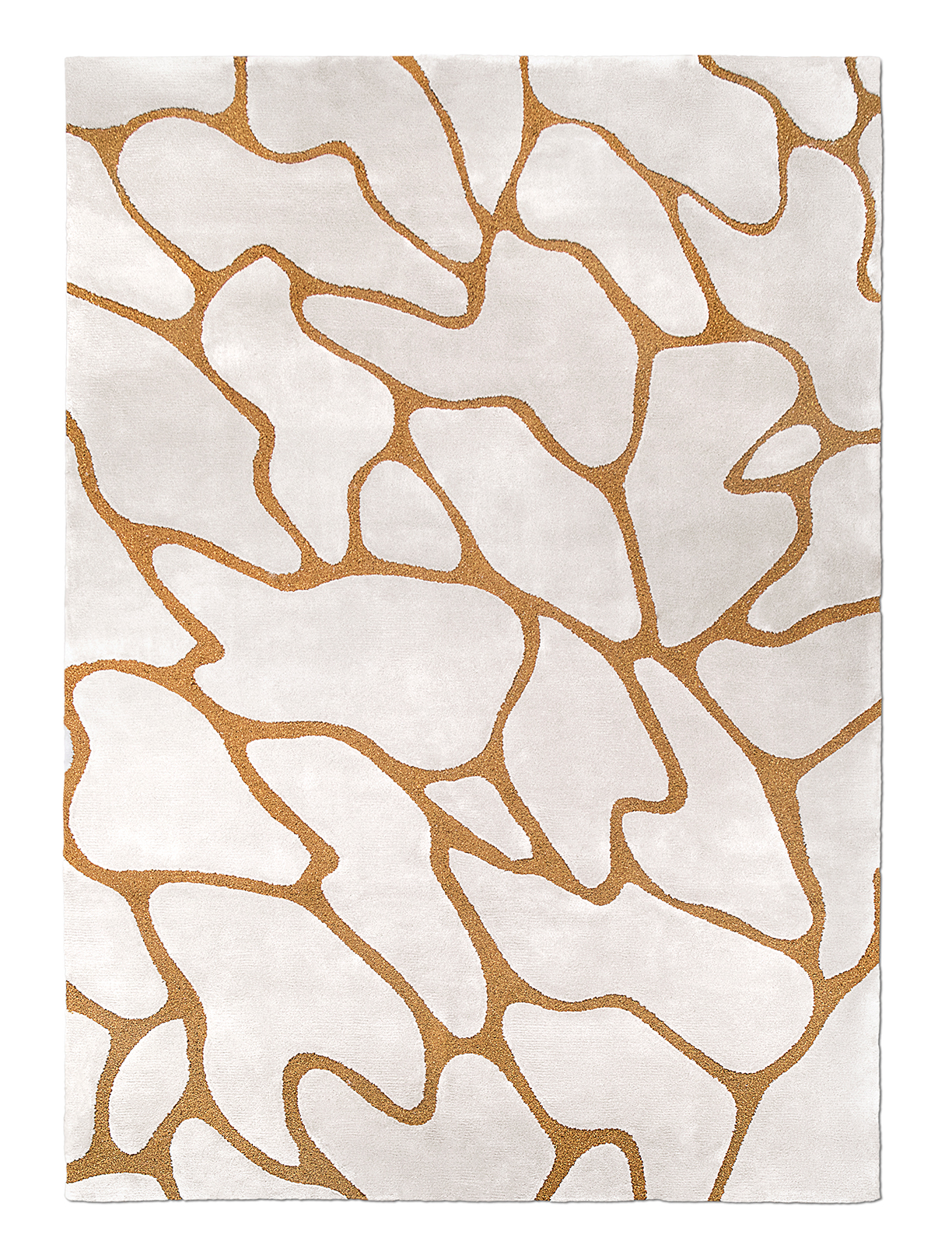
Trends You Don’t Want to Miss
Neutral Colors — discreet tones can add an elegant touch.

Asymmetrical — the trend breaks tradition with eye-catching designs.

New Vintage — classic themes mix perfectly with modern elements.

Neo-Cubism — geometric shapes and 20th-century avant-garde expressions.
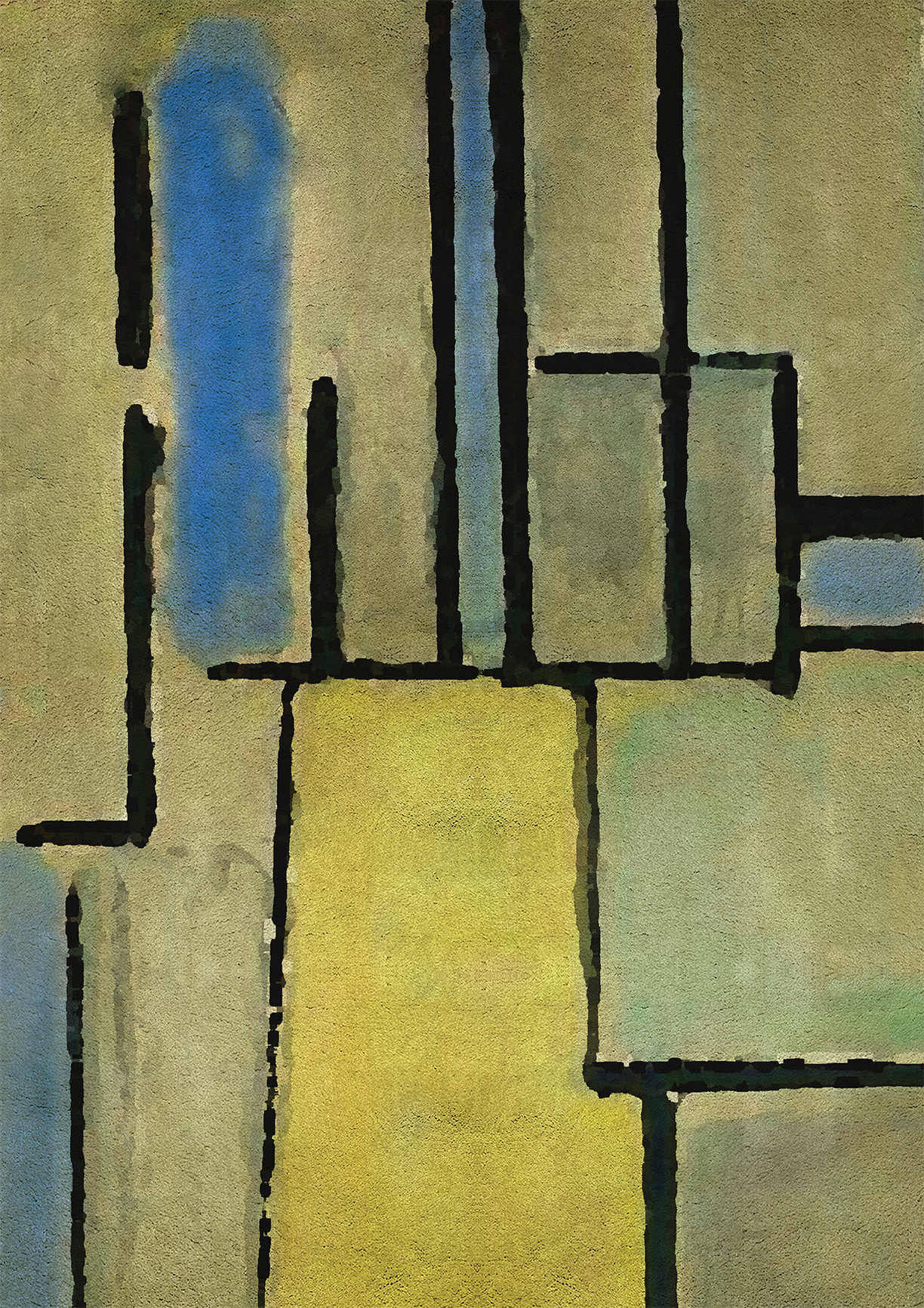
Photos by Rug’Society
Nature has been inspiration to designers and artists since the dawn of design, from floral prints and handcrafted wood pieces to architectural choices meant to showcase natural light. While these pieces aren’t dependent on natural light, their design and function are inspired by nature and its ever-evolving beauty.
In-es.artdesign
Italian artist and designer Oçilunam founded In-es.artdesign in 2003, to achieve their goal of combining art and design is an art in itself. The lamps from the brand’s Out Collection, through a design that encompasses nuances and varied sensations, create the ideal atmosphere for outdoor dinners, or to enjoy relaxation under the sun or starry sky. After dark you will be able to illuminate the garden or the terrace with a variety of shapes and colors, adaptable to any type of space.
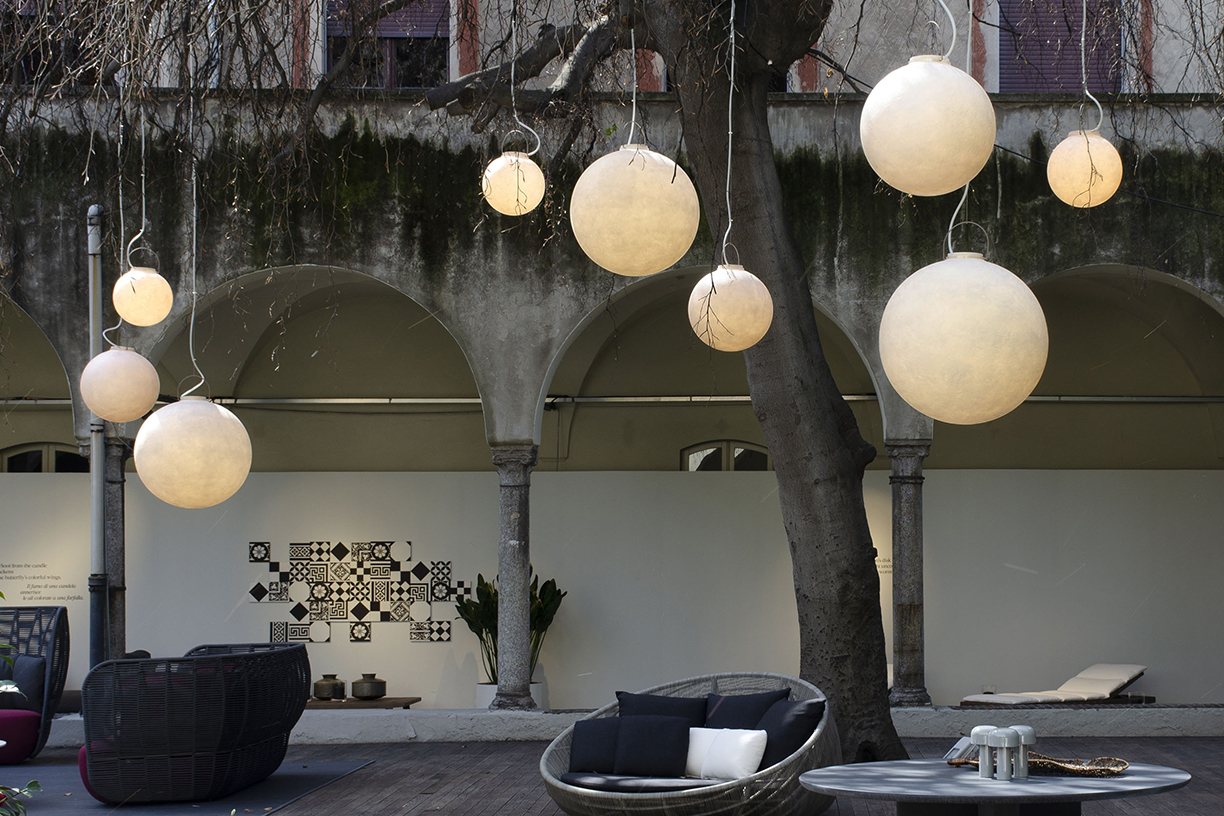
Photo courtesy In-es.artdesign.
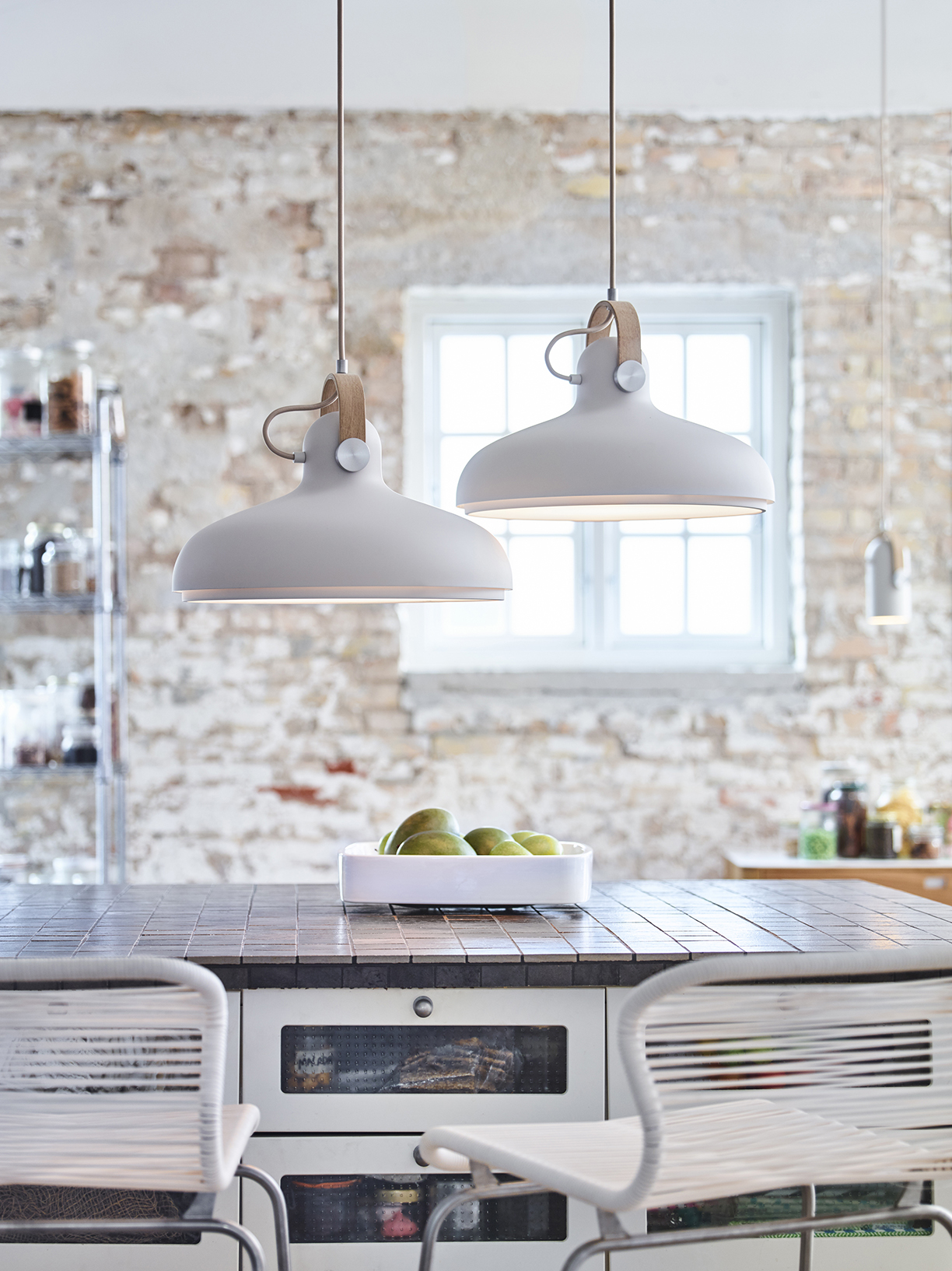
Photo courtesy HolzDesignPur.
Le KLINT
Traditional Danish company LE KLINT is known for its design lamps. Taking into account new trends and technologies, the LE KLINT luminaires are a symbol of modern Danish design, without neglecting the integrity of the company founded in 1943. In addition to folded lampshades made of paper and plastic, LE KLINT’s latest CARRONADE series will also feature aluminum luminaires with wood in elegant industrial design.
The Nordic design luminaires from LE KLINT receive their industrial charm primarily through the mix of natural materials like aluminum and wood: while the lampshades are made of aluminum, the bracket consists of light oak or dark walnut wood. Laterally set discs of gold-colored brass or silver aluminum round off the design of the CARRONADE lights in style.
For the CARRONADE series, the young Danish designer Markus Johansson was inspired by 18th century ship cannons, which is evident both in the form and in the material selection of the luminaries. All CARRONADE luminaires are also individually adjustable and can therefore be easily adapted to the respective room situation.
“I conclude that design, for me, has to be a perfect combination of function and form, which conveys emotions, that subtly affects us as humans, while simultaneously, enhances our daily experiences,” says Johansson.
The combination of the individual CARRONADE luminaires results in modern lighting concepts. While the CARRONADE pendant luminaires in different sizes illuminate, for example, the dining room table, the floor lamps CARRONADE low and high create atmospheric light conditions in the living room.
Fritz Fryer
With Summer now upon us and gardens in bloom, Fritz Fryer offers the Gorsley Pendant light, a copper rose pendant shade handmade exclusively for Fritz Fryer by a local artist and blacksmith.
Using two sheets of copper, the form is made by hand and is then worked on to create the depth of color that copper can achieve, creating the unique, floral design of the Gorsley. It can add a different dimension sitting above a dining table, or over a breakfast bar; it can be clustered, hanging at different drops for impact; or hang it above a bedside table for a feminine touch.
Beautifully organic in shape; the Gorsley is not only a gorgeous looking light but a piece of art in its own right.
Photo courtesy Fritz Fryer Lighting.
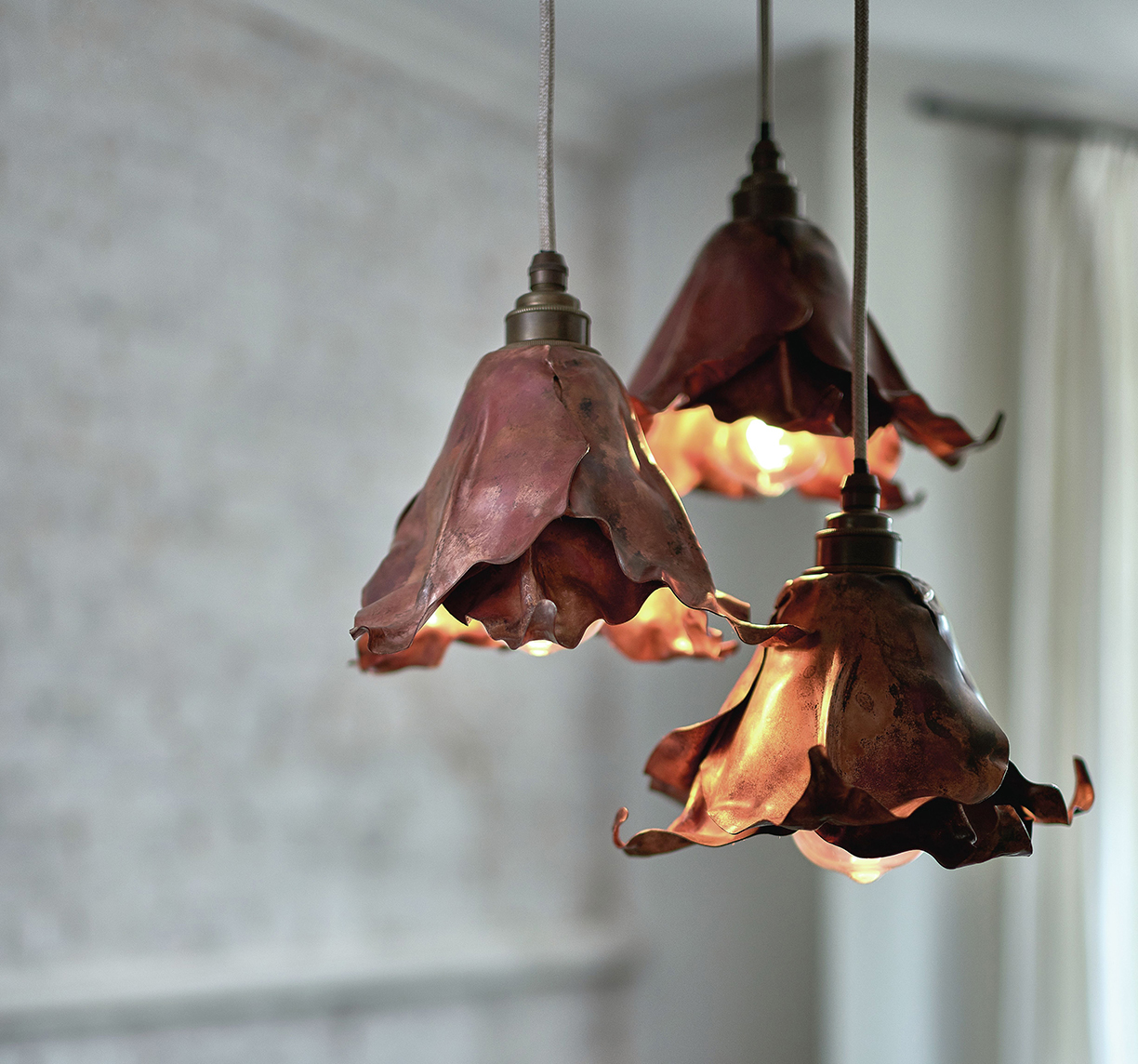
When it comes to maximalist design, more is definitely more, and walls are no exception. We’re not going back to the retro chintz of bygone eras, instead, current wallpaper patterns are bold, edgy, fun and available in huge variety.
Oversized tropical leaves, prancing golden zebras, floral prints in a neon palette, animal prints, geometric shapes… even world maps designed to fit whole walls.
They’re becoming huge works of art within a room with many wallpaper designs taking inspiration from famous artists — Van Gogh, Matisse, Andy Warhol to name a few. Wallpaper designs are refusing to fade into the background.
So how are home designers putting the trend into practice? Bold wallpaper creates a huge impact so it tends to be the starting point for a room design. One or two statement walls is often enough. They’re striking without being overpowering.
Dark colors, big patterns, embracing the bold wallpaper trend requires bravery, but the courageous are able to create unique rooms full of life and edgy charm.
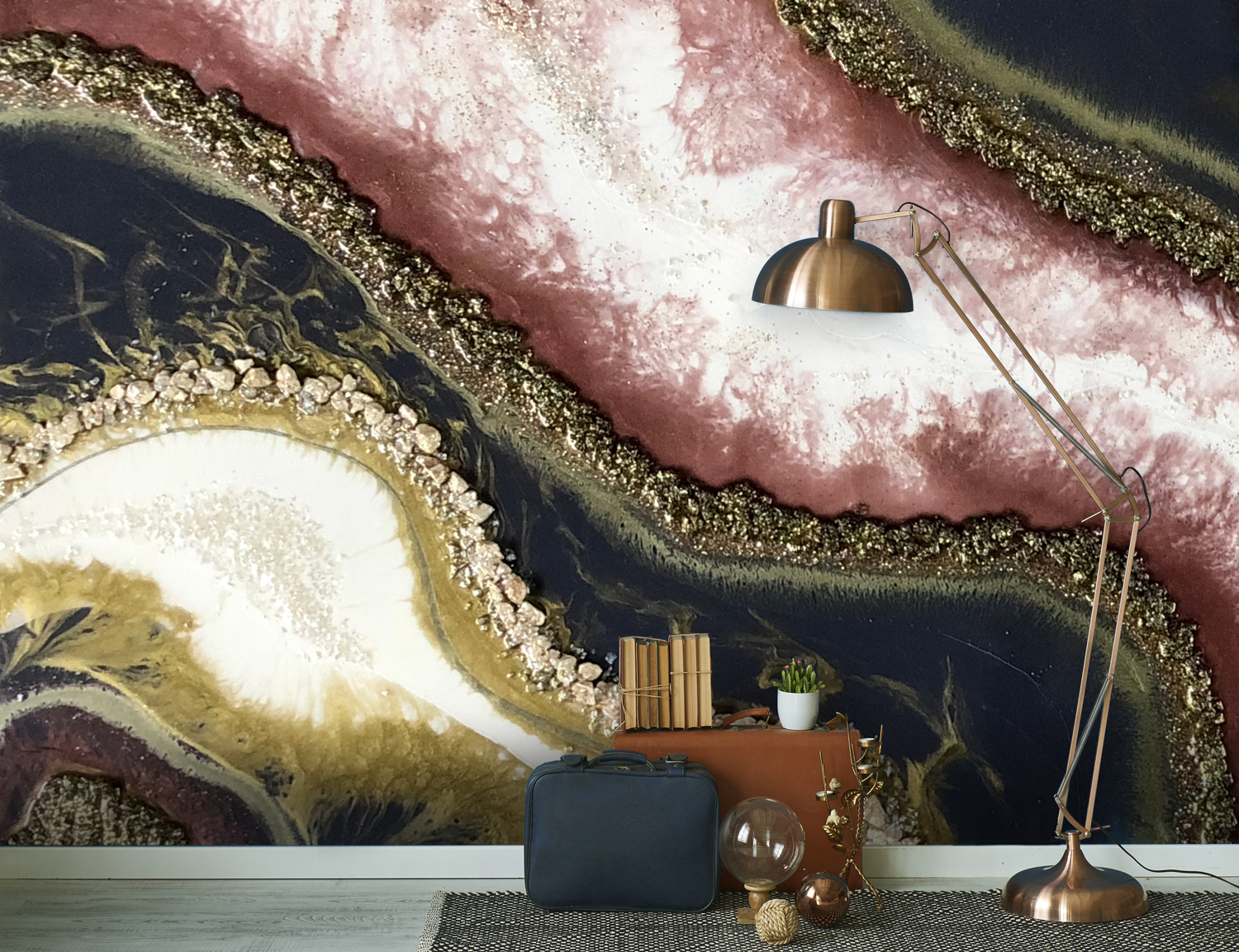
wallsauce.com
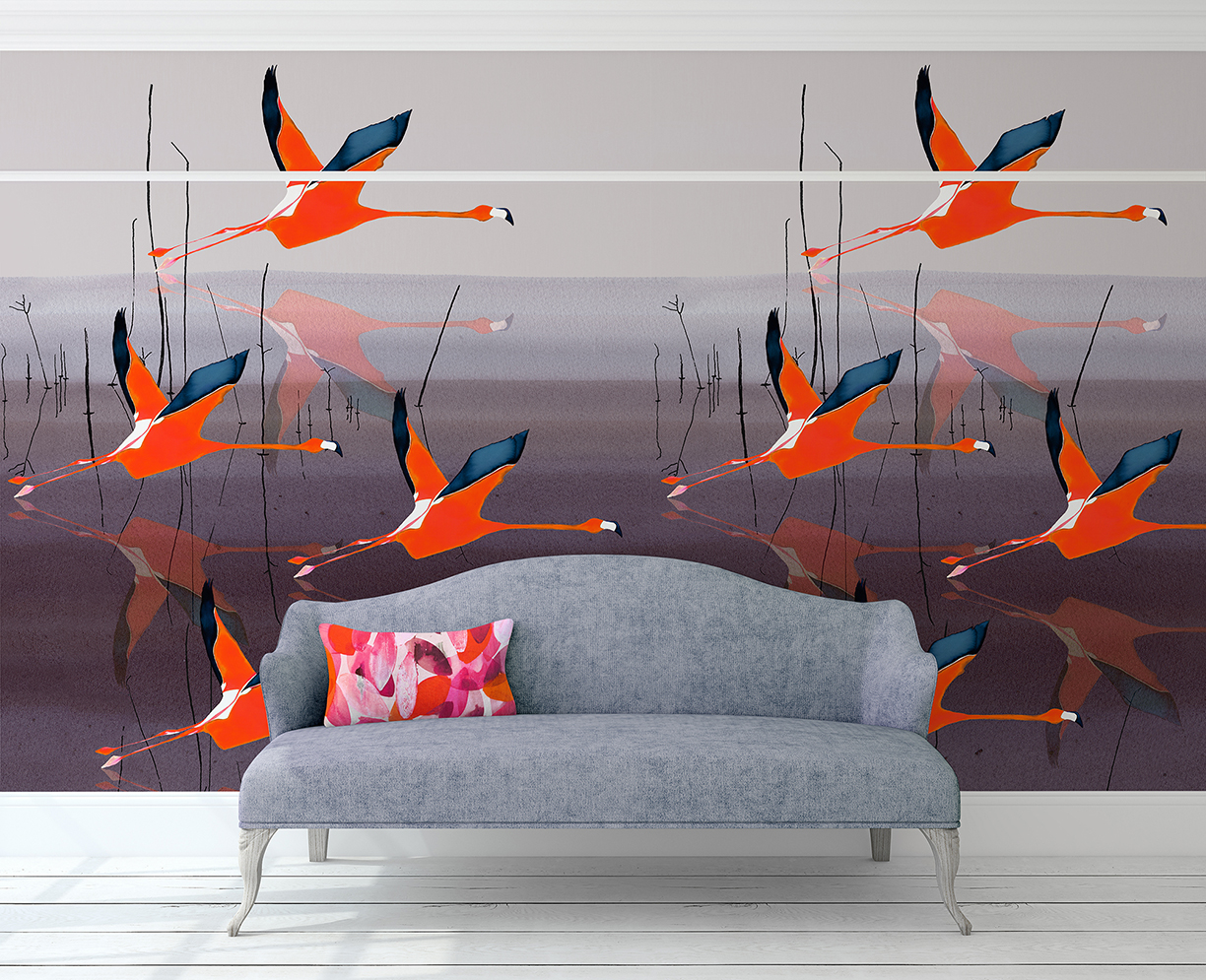
This striking mural wallpaper, designed by Anna Jacobs from her original painting in ink on watercolour paper, is imagined as a super large scale art work to give maximum impact in an interior. It can also be hung in repeat, used with picture rails and dado rails and cropped to fit most wall heights, without compromising the image.
Photo courtesy of Anna Jacobs
This grand Jungle Paradise Wallpaper by Santorus features ascending vines of imperial creatures amongst ferns and palms. A soft gold-metallic finish enhances the stunning imagery to set a scene of embellished colonial nostalgia.
Photo courtesy of Lime Lace
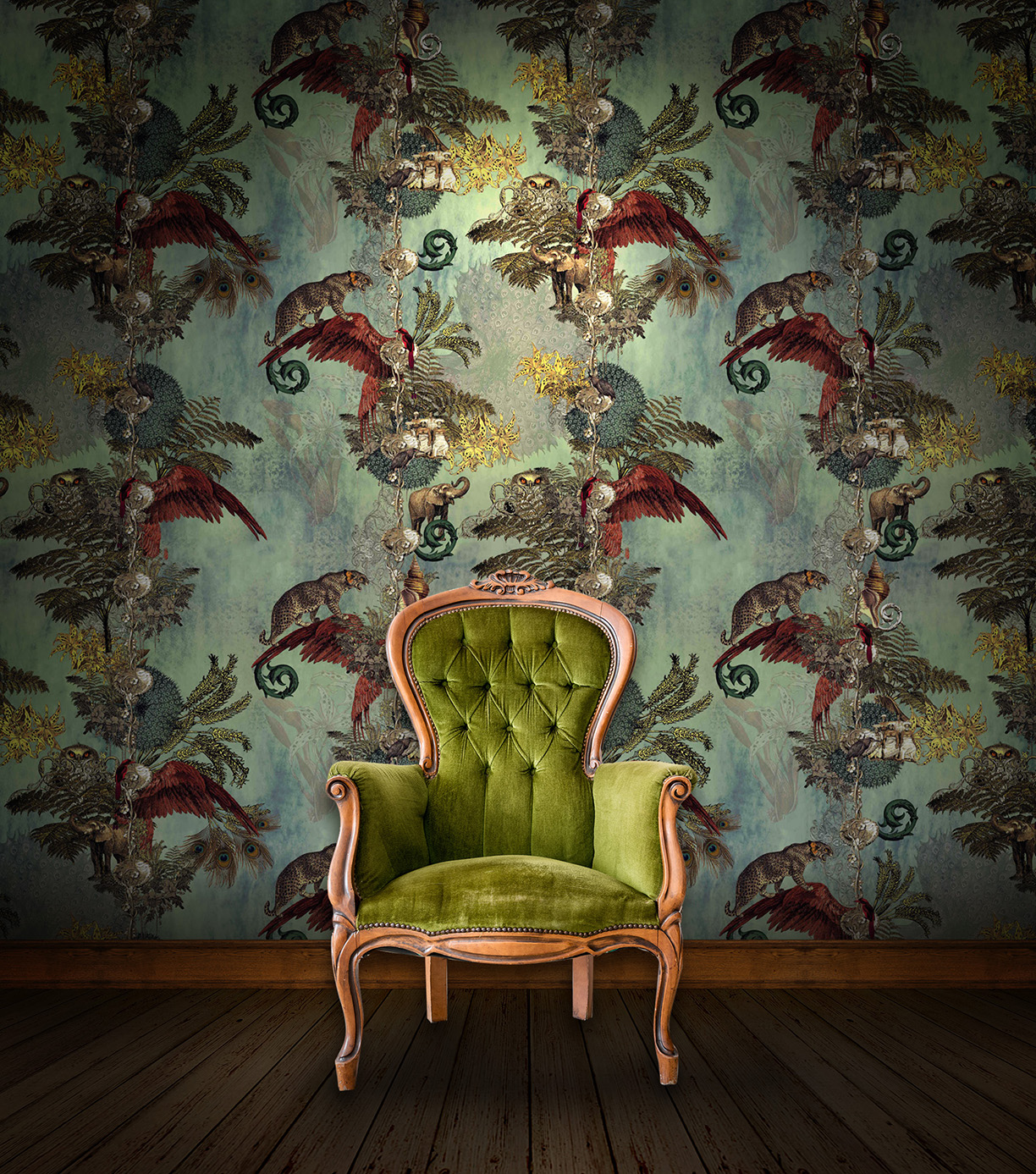
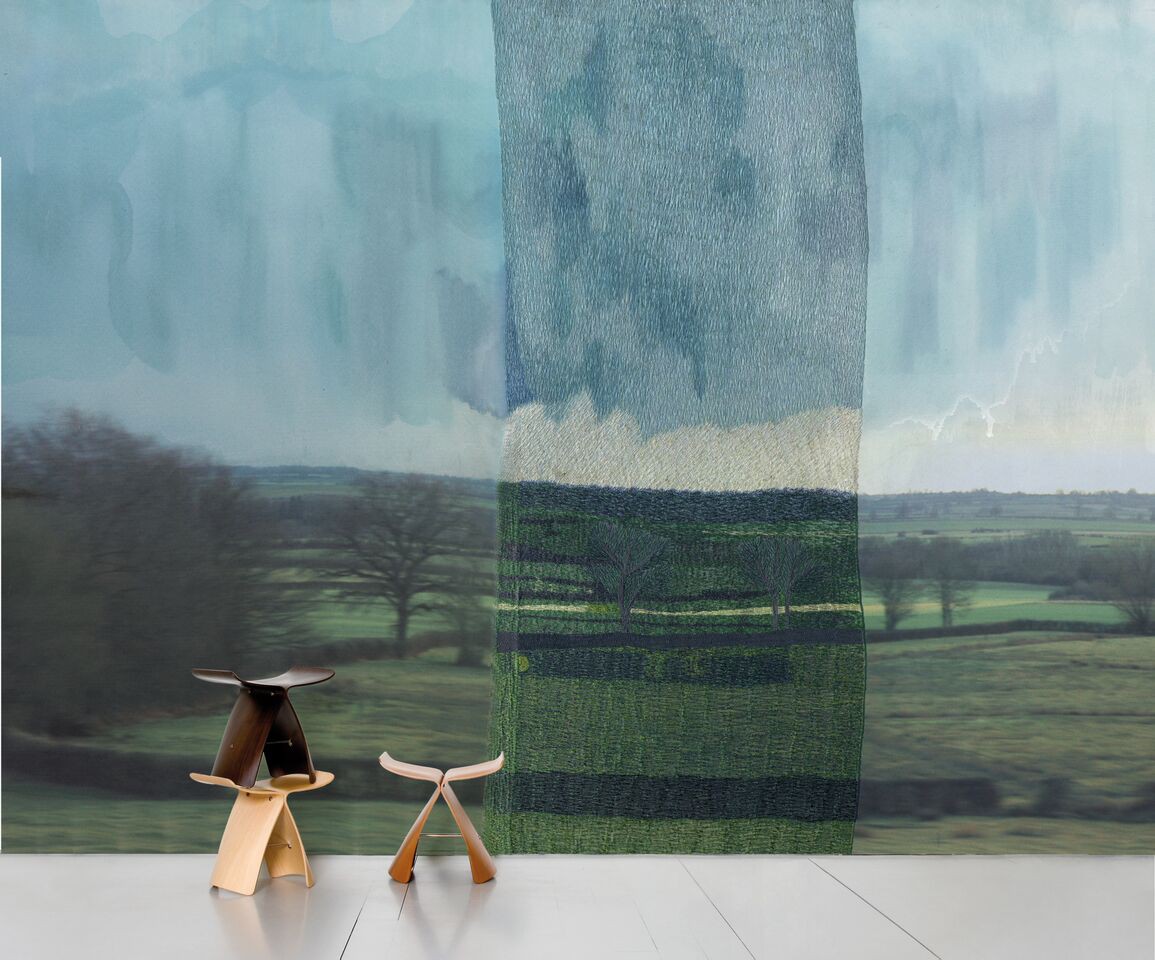
Designed by Aurélie Mathigot, this blue and green wallpaper displays a soothing design. The wallpaper is entitled “De L’autre Cote le Calme,” which translates to “The Other Side of Calm.” If you’re in search of escape, wide open spaces, and extensive greenery, this beautiful wallpaper will bring this breath of fresh air.
Photo courtesy of KSL LIVING
This paper creates a tromp l’oeil effect — appearing as three-dimensional images but on a flat surface. The designer sourced the images of old wood from surfaces in his own workshop in Eindhoven. This is a part of a new collection of six designs by Piet Hein Eek, black marble, white marble, black brick wall, silver brick wall, burnt wood and blue painted wooden floorboards.
Photo courtesy of Lagoon
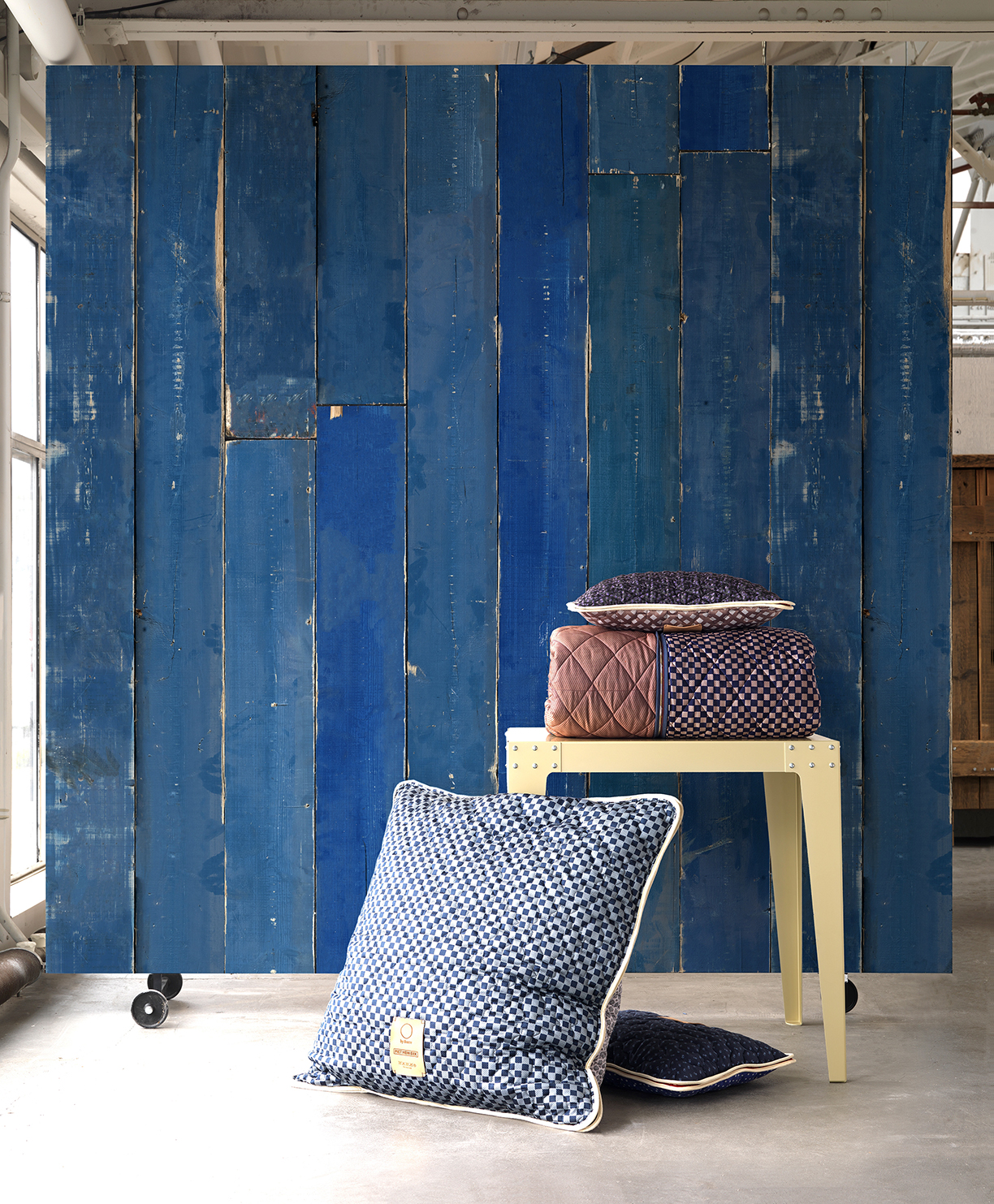
According to The Architectural Review, “The arch was used as early as the 2nd millennium BC, but it was the ever precocious Romans who began the systematic use of the arch, in their greatest engineering feats and as a means of celebrating their greatest military victories.”

Photo courtesy of https://parlourbrooklyn.com/
The Colosseum is an iconic historical site that is recognizable for its grandeur and the well-known arches that make up the exterior. But other cultures and builders throughout the world have also embraced and embellished arches in their architecture. The pointed arch, as seen at Tintern Abbey, Wales and in other gothic architecture, the Gateway Arch in St. Louis, and The Leaning Tower of Pisa are just a few examples of arches found around the world. Arches are often marveled at for their complex structure and their seeming ability to defy gravity.

Photo courtesy of https://parlourbrooklyn.com/
Here and Now
The Parlour
In an effort to honor the historical identity of Brooklyn’s highly sought-after Park Slope enclave, INC infused classic elements from the neighborhood with a modernized approach into the design of the new boutique residences at Parlour.

Photo courtesy of https://parlourbrooklyn.com/
The custom-crafted, mullion-free arched windows from Europe are an homage to the signature arched bridges in Prospect Park, and the limestone brick a nod to the limestone townhomes with arched motifs that face the park.

Photo courtesy of https://parlourbrooklyn.com/
Luna
Also, located in Brooklyn, New York is Luna — 39 condominium residences designed by Luca Andrisani with a host of amenities tailored to make every day a holiday, according to lunagowanus.com

Building Rendering: Credit PAX Brooklyn
130 Williamby David Adjaye in New York City
“At 66 stories and nearly 800 feet tall, Adjaye’s first New York City high-rise tower is an important contribution to the New York City skyline. 130 William’s hand-cast concrete facade creates a striking form against the cityscape of Lower Manhattan,” according to the 130 William website.
130 William also includes the intriguing arched windows. At the top of the building, the theme has been turned on its head, with upside down arches lining the upper floors.











